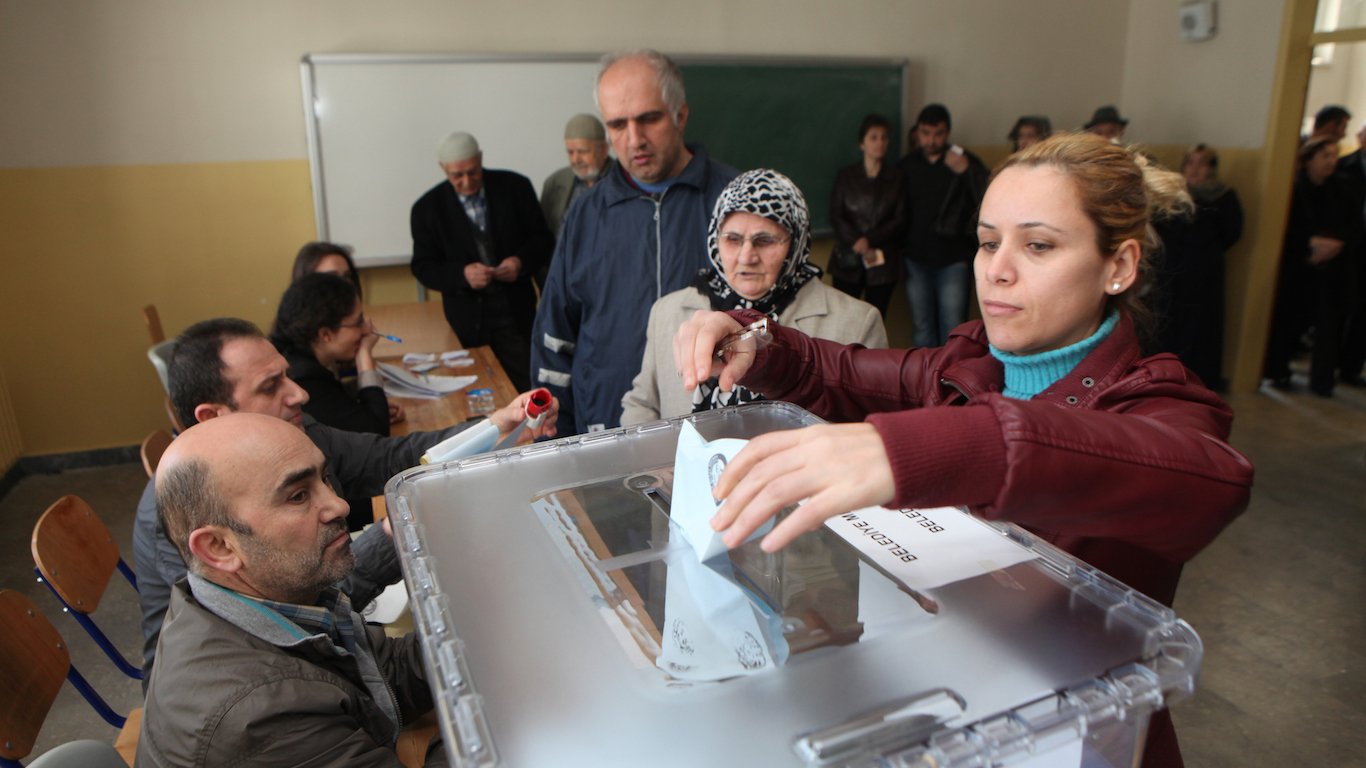

Democracy in all its forms has been celebrated since it became a core principle of Greek society over 2,000 years ago. Today, whether or not citizens are granted the right to choose their leader or representative is one of the main litmus tests for fair governance.
While voting may not always mean a democratic process, from China, with a population of more than 1.4 billion people, to tiny Montserrat, which numbers 5,215 residents, virtually every nation on Earth votes. It is a right millions have died for, and the very act of voting in many parts of the world is itself an act of bravery. Few images were more inspiring than those of voters in war-torn Iraq holding up their purple-tinged thumbs to indicate that they had cast a ballot.
To track down the largest voting contests in the world, 24/7 Wall St. reviewed total votes cast in elections and referendums around the world since as early as 1945. Because China and India are the world’s most populous countries, those nations’ elections over many years would by default dominate a significant portion of the largest elections of all time. Population and voting age totals are from the year of the election.
To provide a broader perspective on voting contests worldwide, we considered each country only once. Included on our list are the biggest turnouts for presidential and parliamentary elections, as well as for referendums such as the Brexit vote in the United Kingdom two years ago, by country.
Click here to see the largest voting contests of all time by country.
Click here to see our detailed findings and methodology.
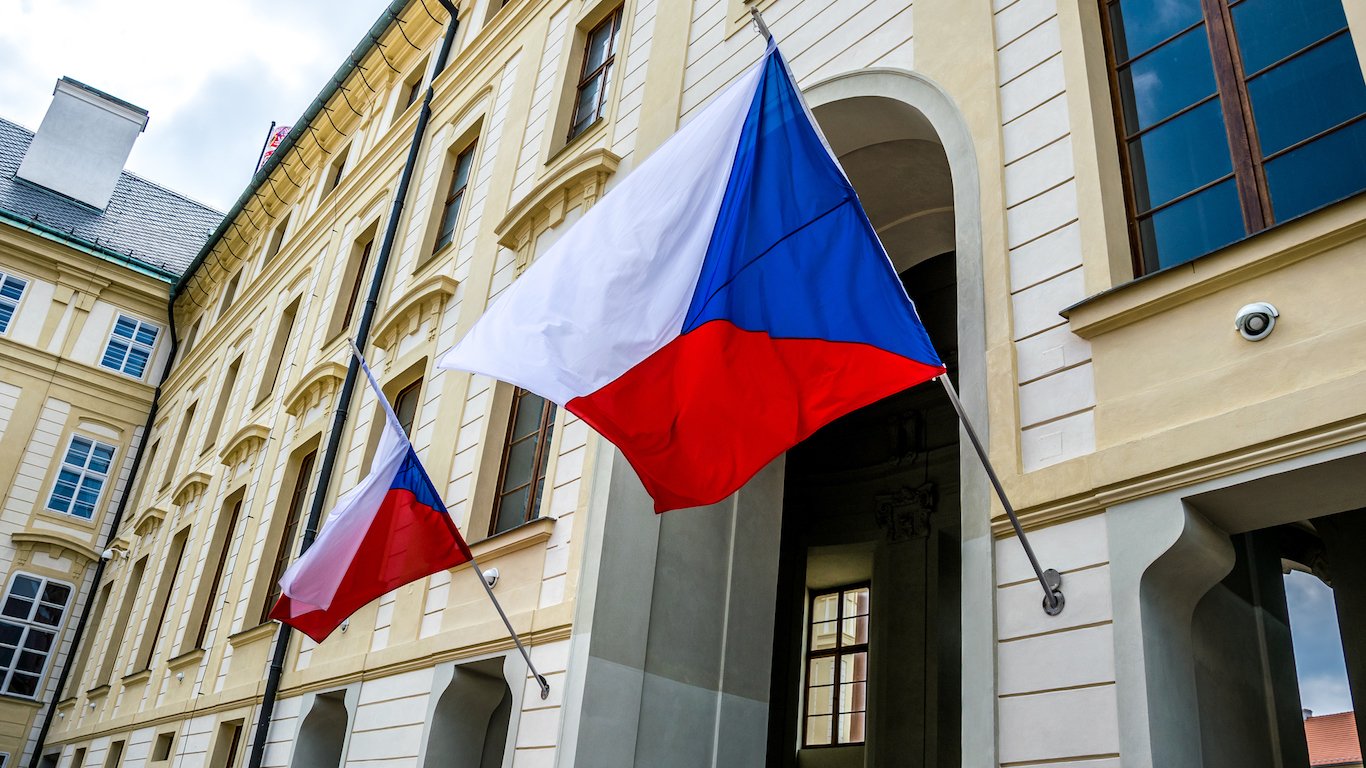
50. Czechoslovakia
> Parliamentary elections of 1990: 10,785,270 total votes
> Population: 15,661,000 (total) 11,589,140 (voting age)
> Voter turnout: 96.3%
> Compulsory voting?: No
The 1990 elections in Czechoslovakia are the first free elections in the country since 1946.
[in-text-ad]
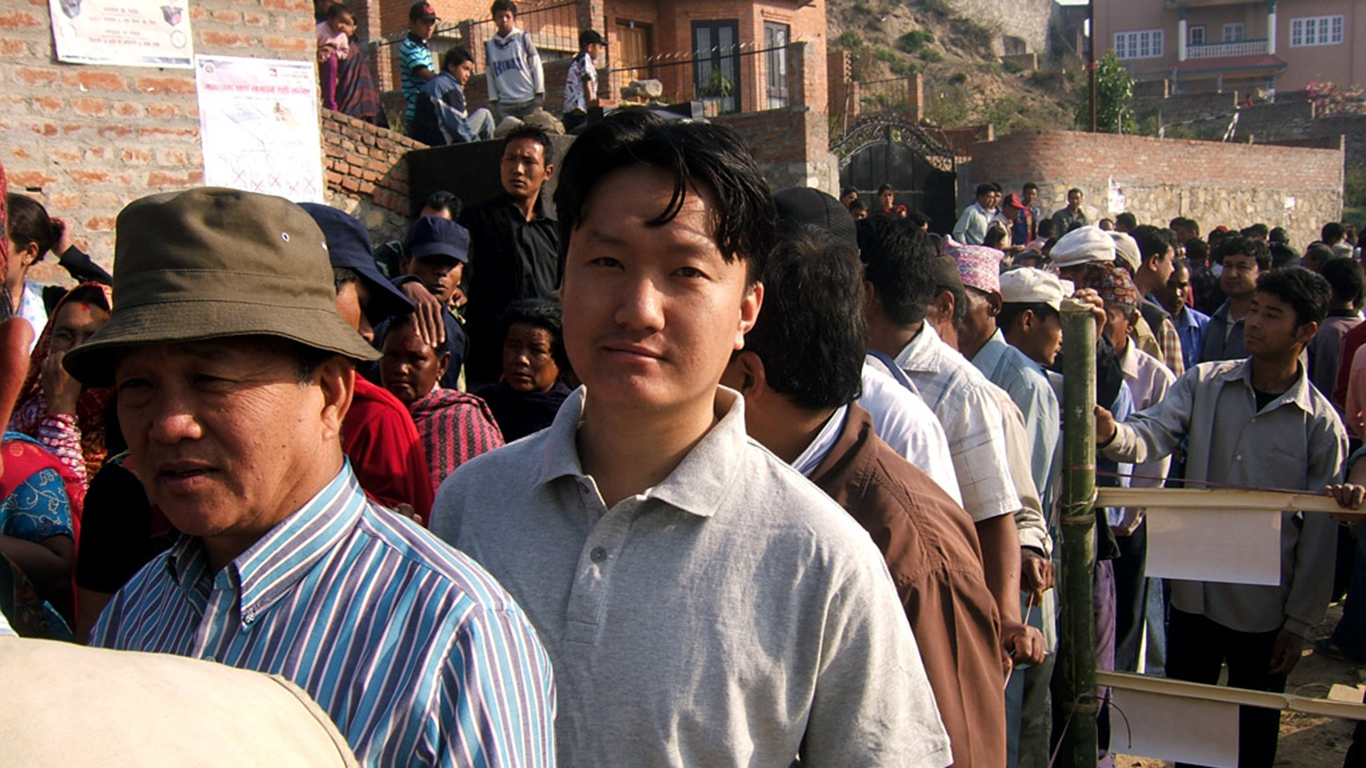
49. Nepal
> Assembly election of 2008: 11,146,540 total votes
> Population: 28,901,790 (total) 14,978,158 (voting age)
> Voter turnout: 63.3%
> Compulsory voting?: No
Amid a backdrop of violence and possible vote tampering, the Communist Party of Nepal-Maoist wins a plurality of seats in assembly elections.

48. Ghana
> Presidential election of of 2012: 11,246,982 total votes
> Population: 24,652,402 (total) 13,682,083 (voting age)
> Voter turnout: 80.2%
> Compulsory voting?: No
John Dramani Mahama is declared president-elect after getting 50.7% of the vote amid claims the result was manipulated.

47. Syrian Arab Republic
> Presidential election of of 2014: 11,634,412 total votes
> Population: 17,951,639 (total) 10,852,241 (voting age)
> Voter turnout: 73.4%
> Compulsory voting?: No
President Bashar al-Assad gains a landslide victory in the war-torn nation with almost 88% of the vote.
[in-text-ad-2]
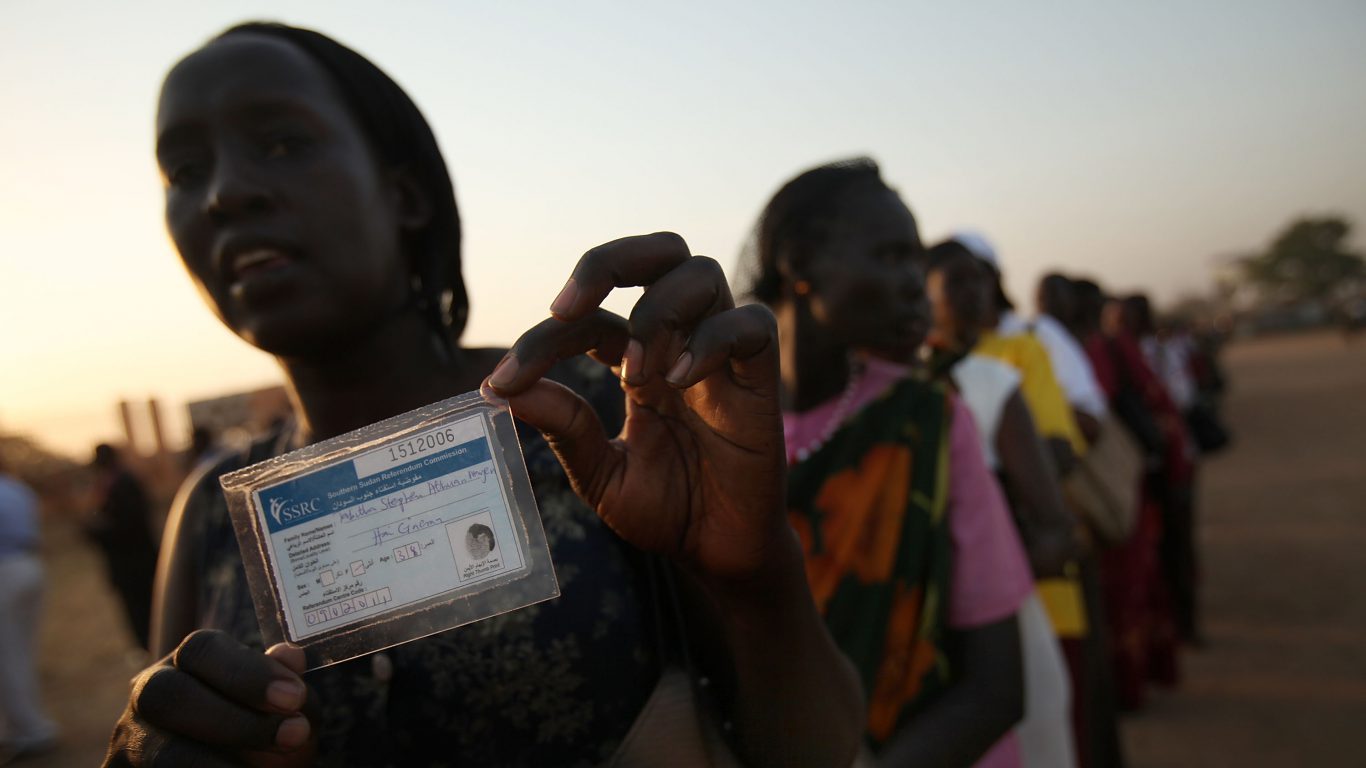
46. Sudan
> Parliamentary election of of 2010: 11,646,822 total votes
> Population: 35,505,000 (total) 18,168,000 (voting age)
> Voter turnout: 72.0%
> Compulsory voting?: No
President Omar al-Bashir is declared the winner of the country’s first multi-party election in more than 20 years.
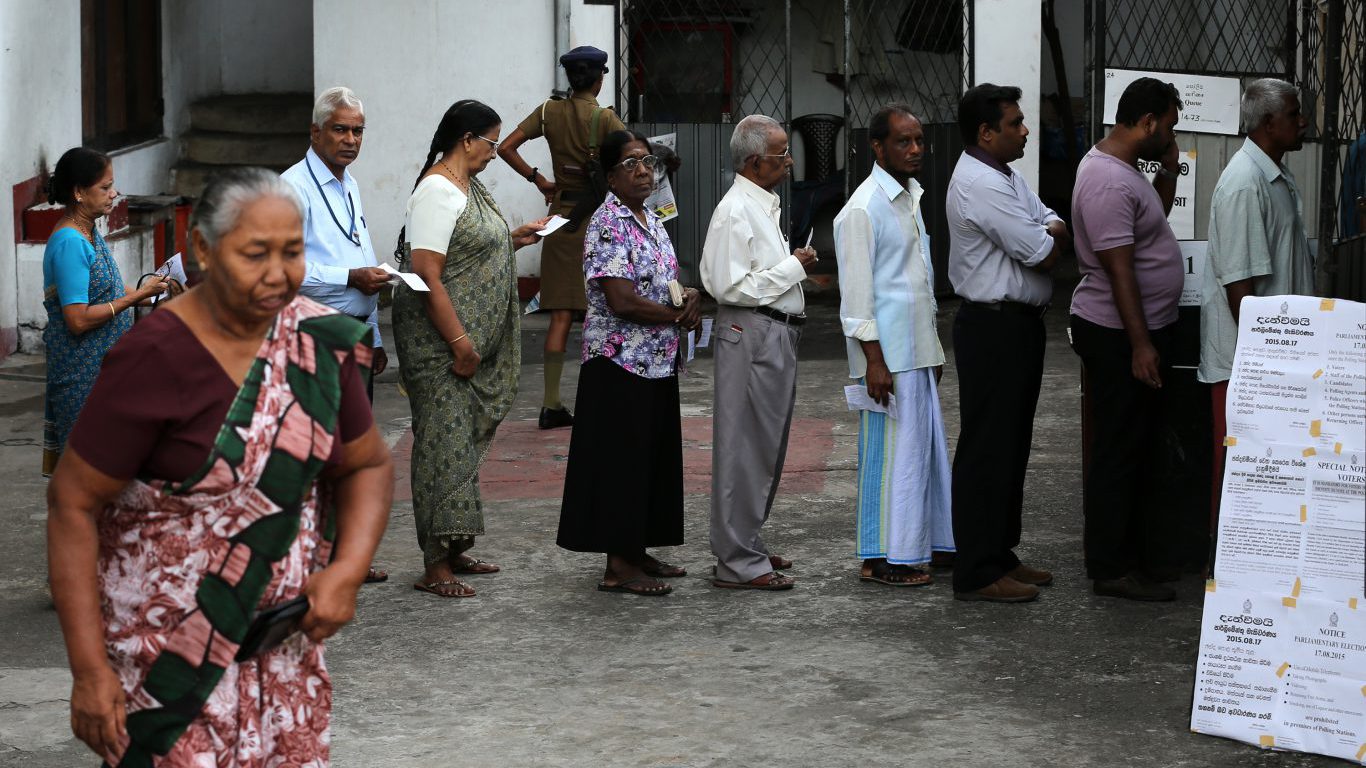
45. Sri Lanka
> Presidential election of of 2015: 12,264,377 total votes
> Population: 21,866,445 (total) 15,262,770 (voting age)
> Voter turnout: 81.5%
> Compulsory voting?: No
Sri Lankan leader Mahinda Rajapaksa, in office since 2005, is beaten by Maithripala Sirisena in a presidential election.
[in-text-ad]
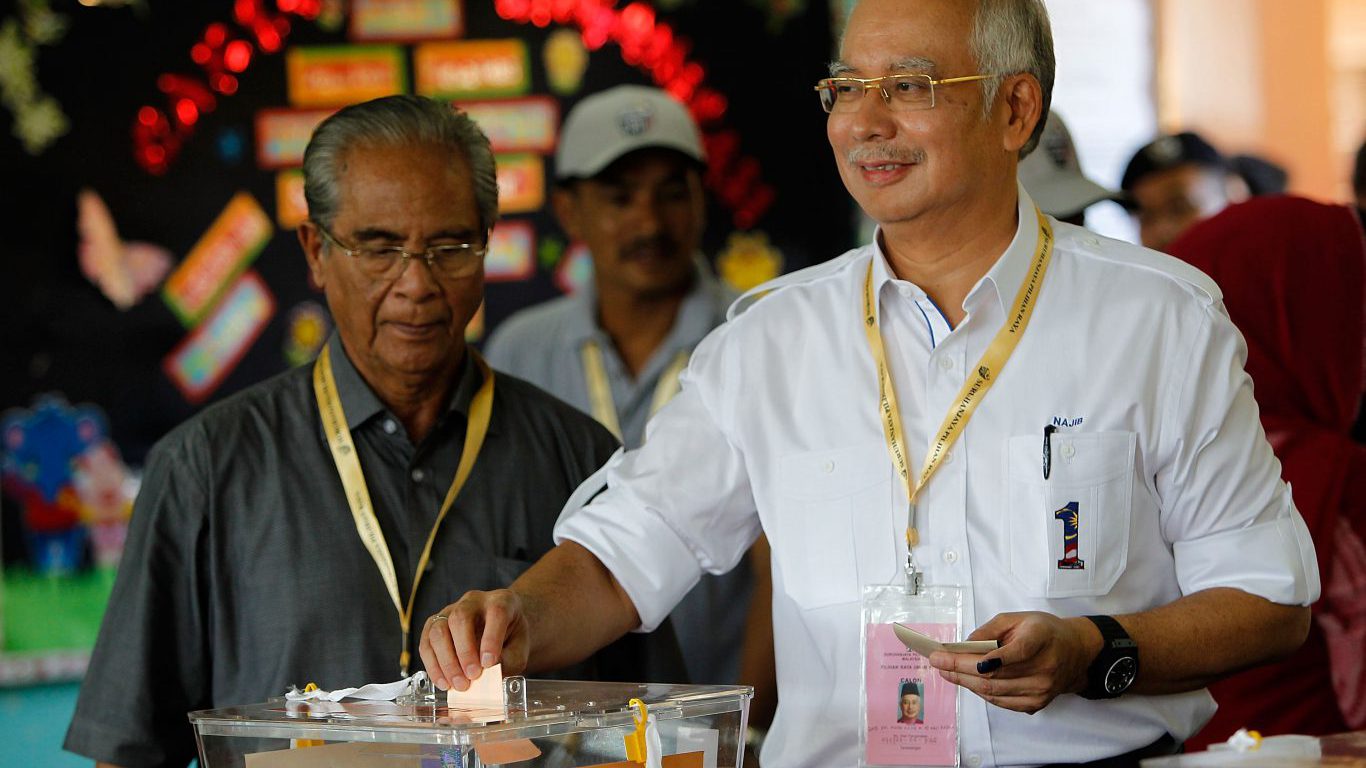
44. Malaysia
> Parliamentary election of of 2018: 12,299,514 total votes
> Population: 31,809,660 (total) 19,794,567 (voting age)
> Voter turnout: 82.3%
> Compulsory voting?: No
In a result that surprises many political analysts, the Pakatan Harapan party wins a majority of parliamentary seats, ousting the Barisan Nasional (BN) party for the first time in Malaysia’s history. Mahathir Mohamad is elected prime minister to become the oldest elected leader in the world at age 92.
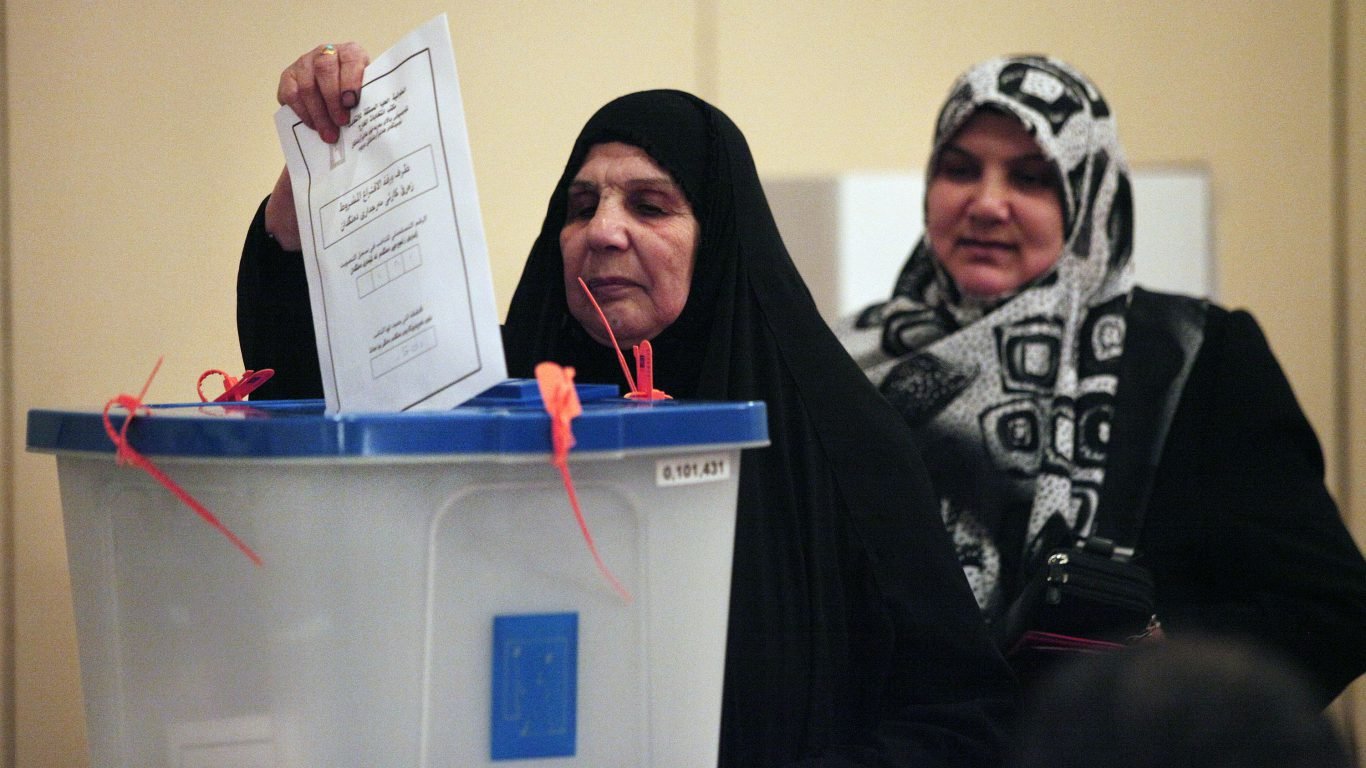
43. Iraq
> Parliamentary election of of 2014: 13,013,765 total votes
> Population: 32,585,692 (total) 16,942,233 (voting age)
> Voter turnout: 60.5%
> Compulsory voting?: No
Iraqis elect 328 lawmakers for the parliament, which then chooses Haider al-Abadi as prime minister to form an inclusive government from the Shiite alliance, Kurds, and Sunnis.
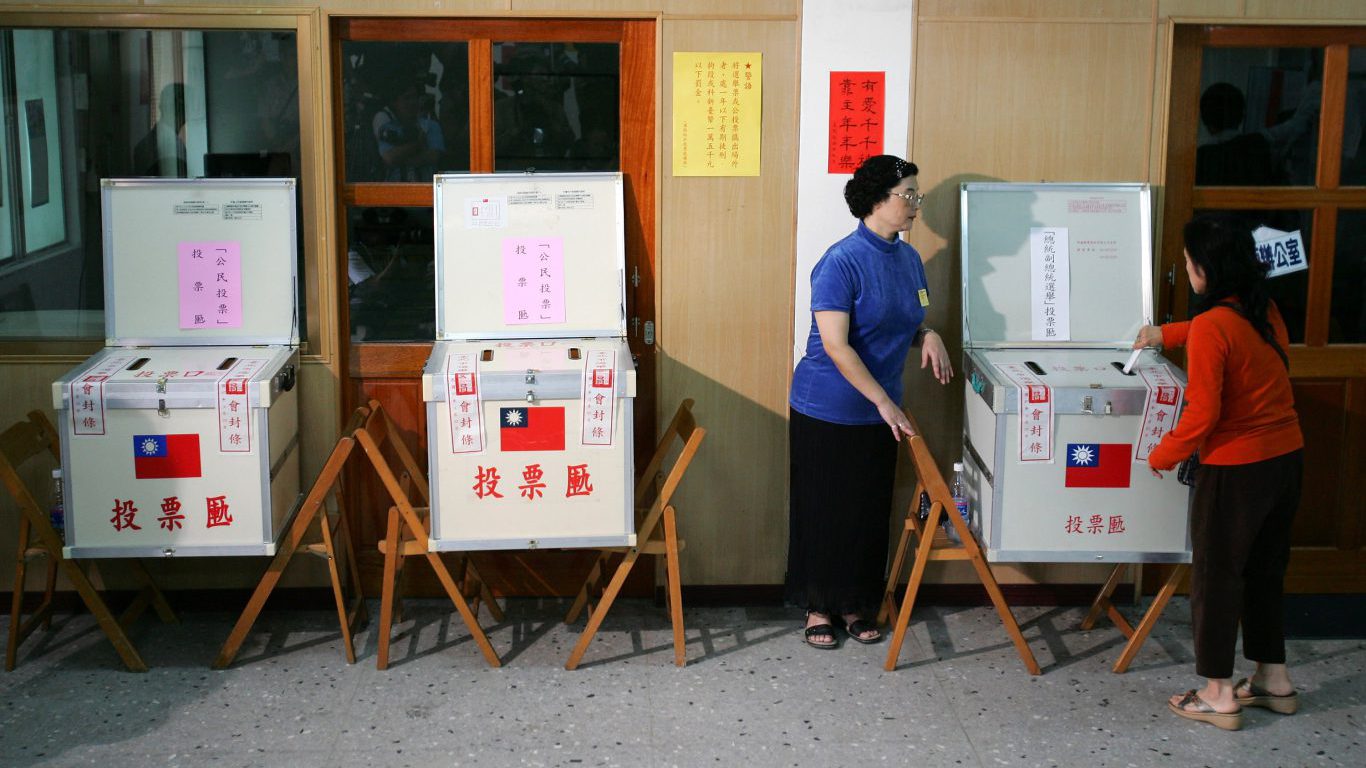
42. Taiwan
> Parliamentary election of of 2012: 13,514,199 total votes
> Population: 23,230,506 (total) 18,115,247 (voting age)
> Voter turnout: 74.7%
> Compulsory voting?: No
For the first time on the island nation, legislative elections are held simultaneously with the presidential election.
[in-text-ad-2]

41. Romania
> Parliamentary election of of 1990: 13,707,159 total votes
> Population: 19,702,332 (total) N/A (voting age)
> Voter turnout: 79.7%
> Compulsory voting?: No
The first free elections are held in the Eastern European nation since 1937. These also are the first free elections since the overthrow of the communist regime six months earlier.

40. Australia
> Parliamentary election of of 2016: 14,262,016 total votes
> Population: 22,992,654 (total) 18,063,010 (voting age)
> Voter turnout: 91.0%
> Compulsory voting?: Yes
The 2016 Australian federal election is a double dissolution election to resolve deadlocks in the bicameral parliament to pick all 226 members of parliament.
[in-text-ad]
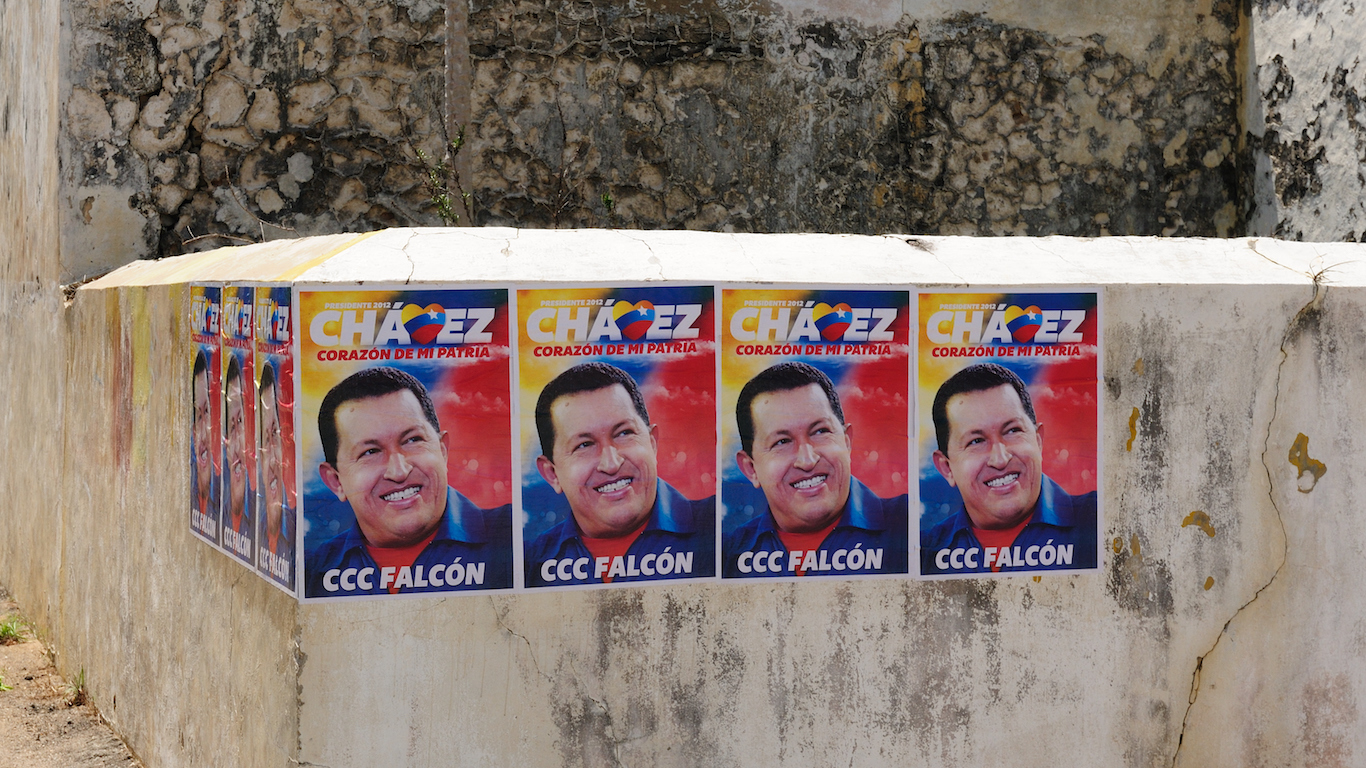
39. Venezuela
> Presidential election of of 2012: 15,176,253 total votes
> Population: 28,047,938 (total) 18,511,639 (voting age)
> Voter turnout: 80.3%
> Compulsory voting?: No
Hugo Chavez is elected to a fourth term as president but dies two months into his term.

38. Algeria
> Presidential election of of 2009: 15,356,024 total votes
> Population: 34,178,188 (total) 23,315,450 (voting age)
> Voter turnout: 74.6%
> Compulsory voting?: No
President Abdelaziz Bouteflika is re-elected to a third term with 90.2% of the vote.
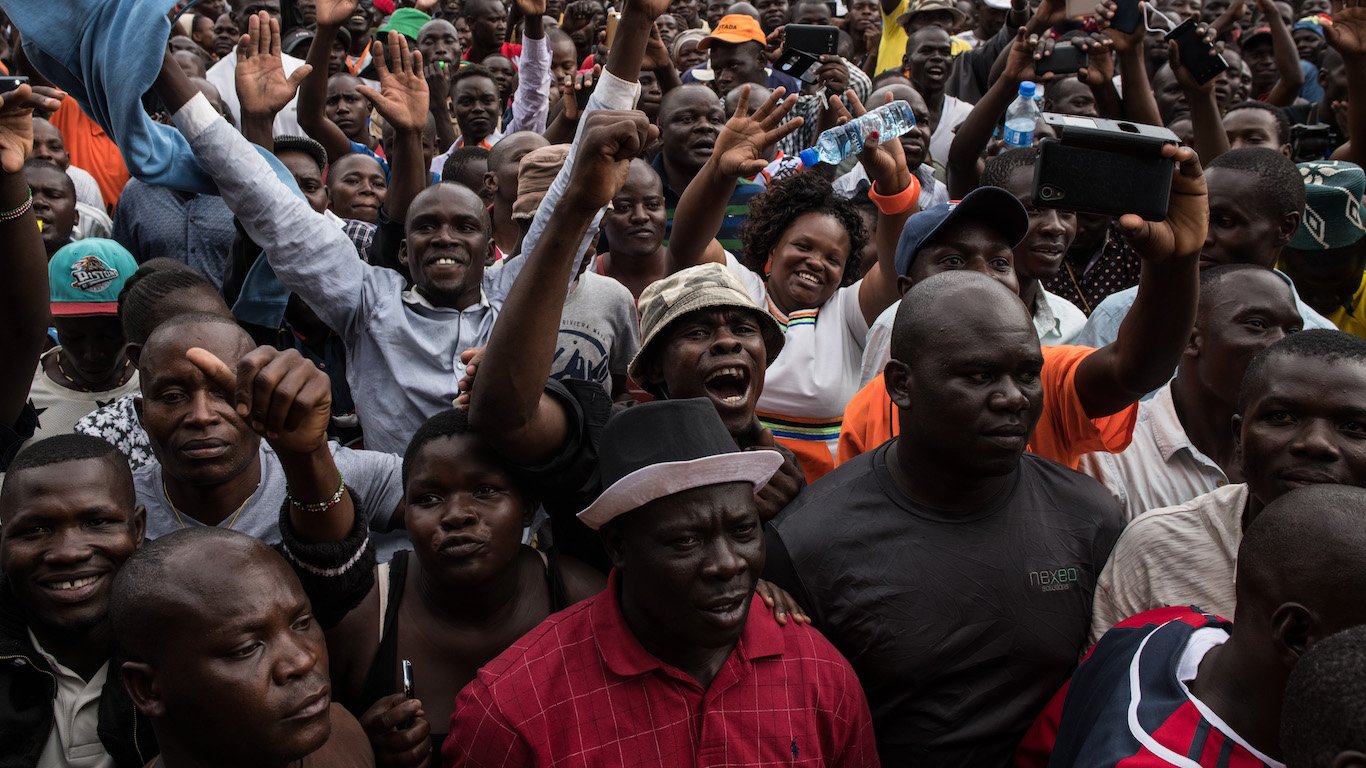
37. Kenya
> Presidential election of of 2017: 15,590,236 total votes
> Population: 47,615,739 (total) 25,374,082 (voting age)
> Voter turnout: 79.5%
> Compulsory voting?: No
Kenya’s supreme court upholds the triumph of President Uhuru Kenyatta following a controversial replay of the presidential election.
[in-text-ad-2]
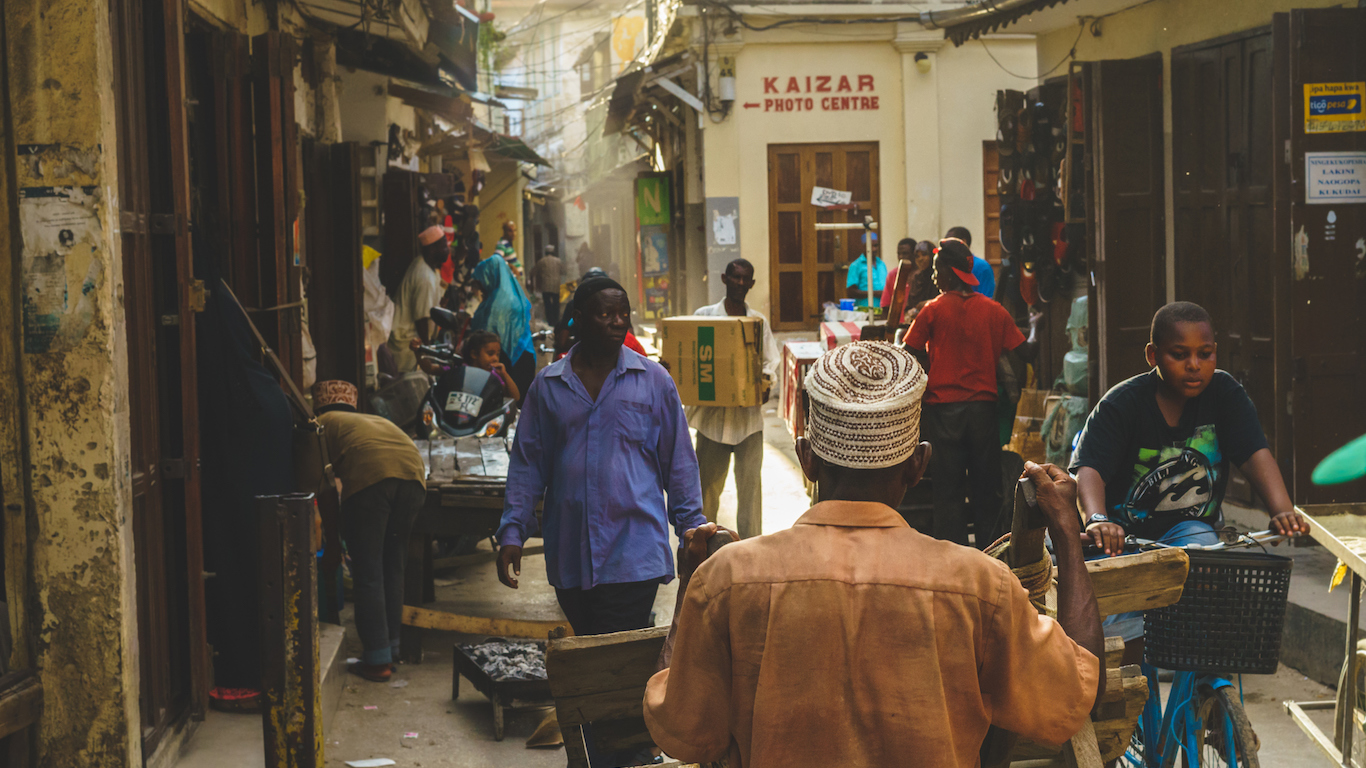
36. Tanzania, United Republic of
> Presidential election of of 2015: 15,596,110 total votes
> Population: 51,045,882 (total) 24,994,742 (voting age)
> Voter turnout: 67.3%
> Compulsory voting?: No
John Magufuli, a chemist by trade and an anti-corruption candidate, wins 58% of the vote in Tanzania’s presidential election.
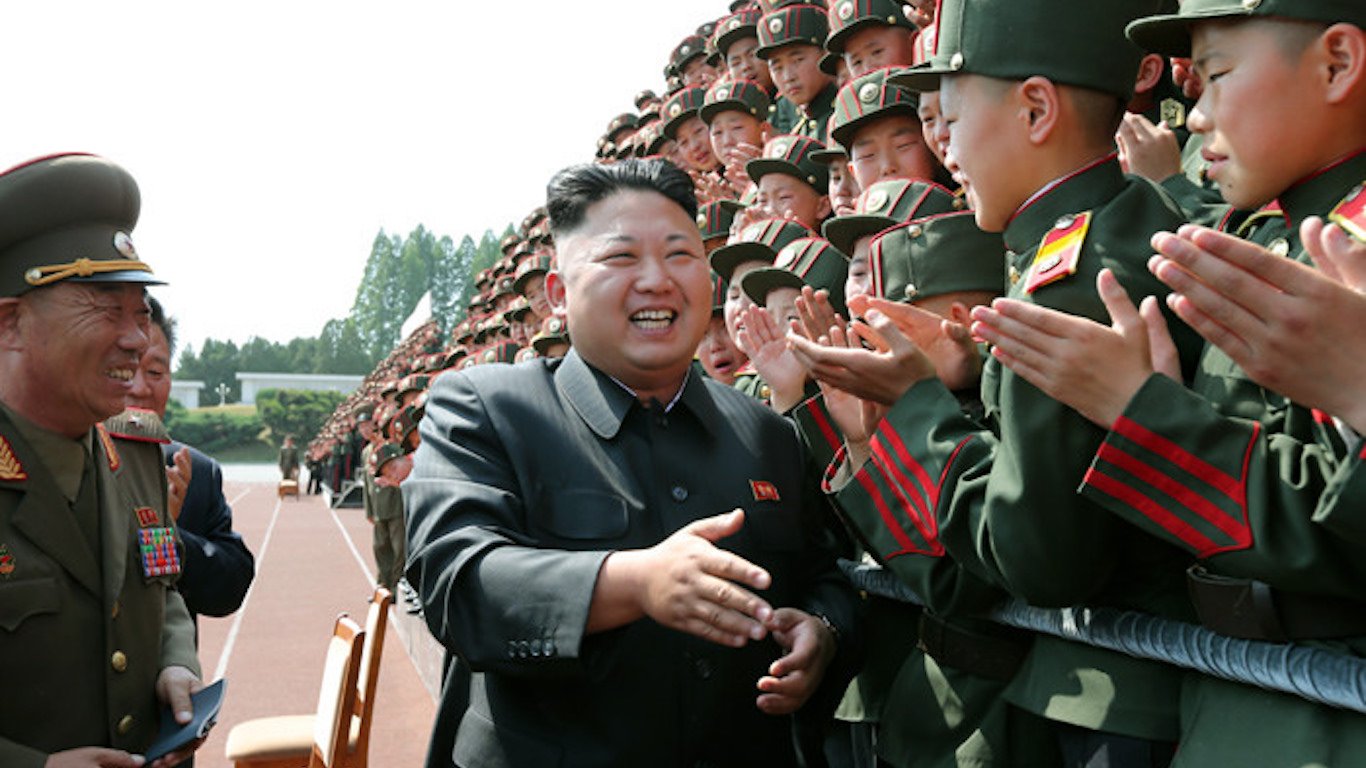
35. North Korea
> Parliamentary election of of 2015: 17,000,000 total votes
> Population: 25,200,000 (total) 17,000,000 (voting age)
> Voter turnout: 99.9%
> Compulsory voting?: Yes
Local elections are held in North Korea for the first since Kim Jong-un came to power in 2011.
[in-text-ad]

34. Canada
> Parliamentary election of of 2015: 17,711,983 total votes
> Population: 35,099,836 (total) 28,512,041 (voting age)
> Voter turnout: 68.3%
> Compulsory voting?: No
Justin Trudeau, whose father was prime minister, is elected PM after the Liberal Party prevents the Conservative Party from winning a fourth straight mandate.
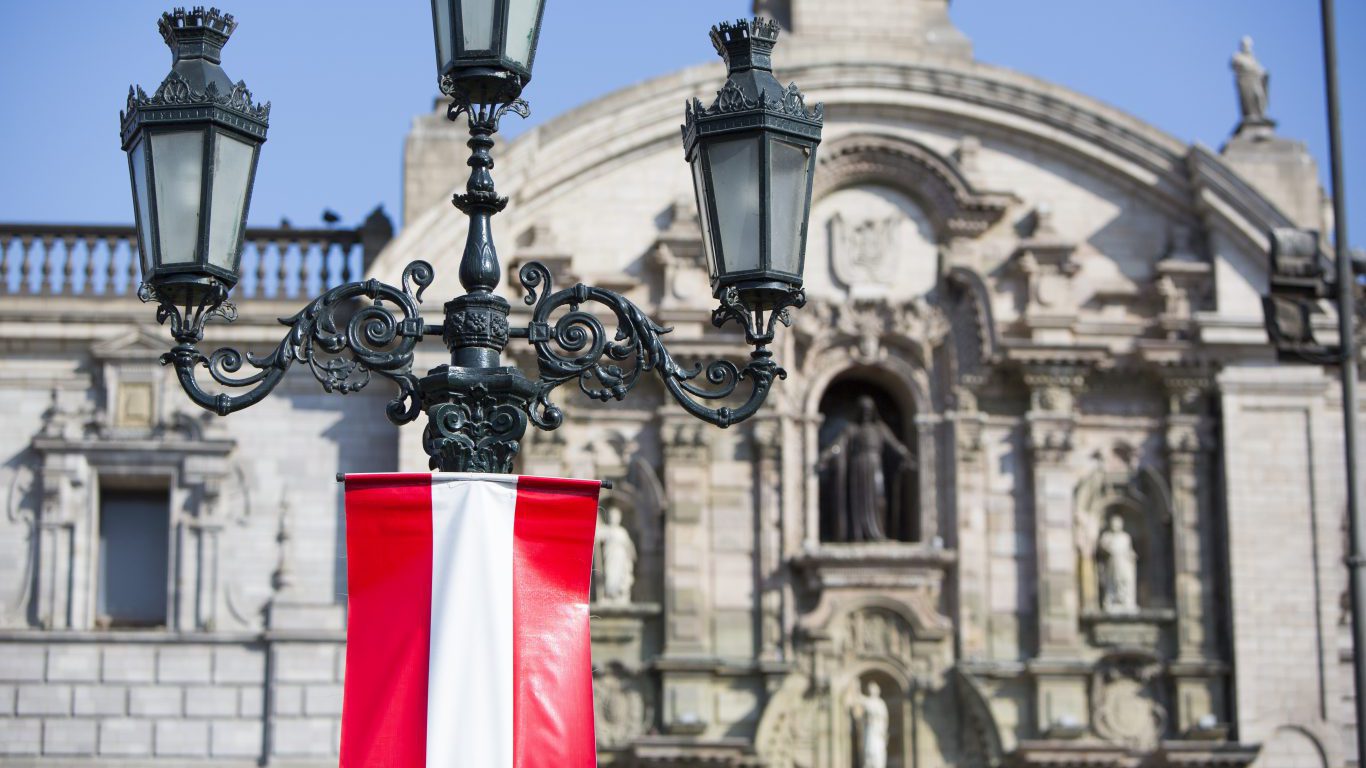
33. Peru
> Parliamentary election of of 2016: 18,731,066 total votes
> Population: 30,741,062 (total) 20,909,390 (voting age)
> Voter turnout: 81.9%
> Compulsory voting?: Yes
Pedro Pablo Kuczynski, a former World Bank economist, wins the presidency of Peru by less than half a percentage point over Keiko Fujimori, daughter of imprisoned former President Alberto Fujimori.
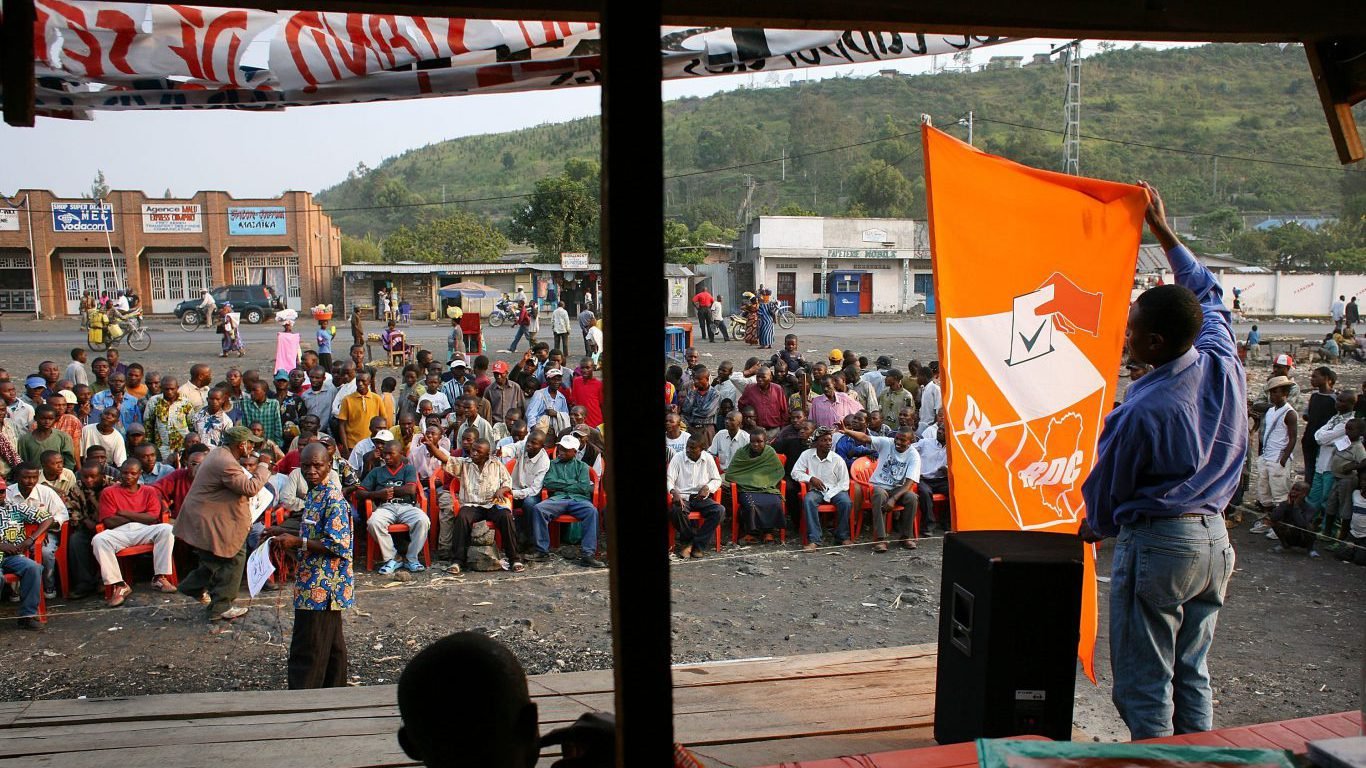
32. Congo, Democratic Republic of
> Parliamentary election of of 2011: 18,911,572 total votes
> Population: 71,712,867 (total) 34,036,859 (voting age)
> Voter turnout: 59.1%
> Compulsory voting?: Yes
President Joseph Kabila is declared the winner of the elections in the Democratic Republic of the Congo, igniting protests and prompting a claim to power by his top challenger.
[in-text-ad-2]
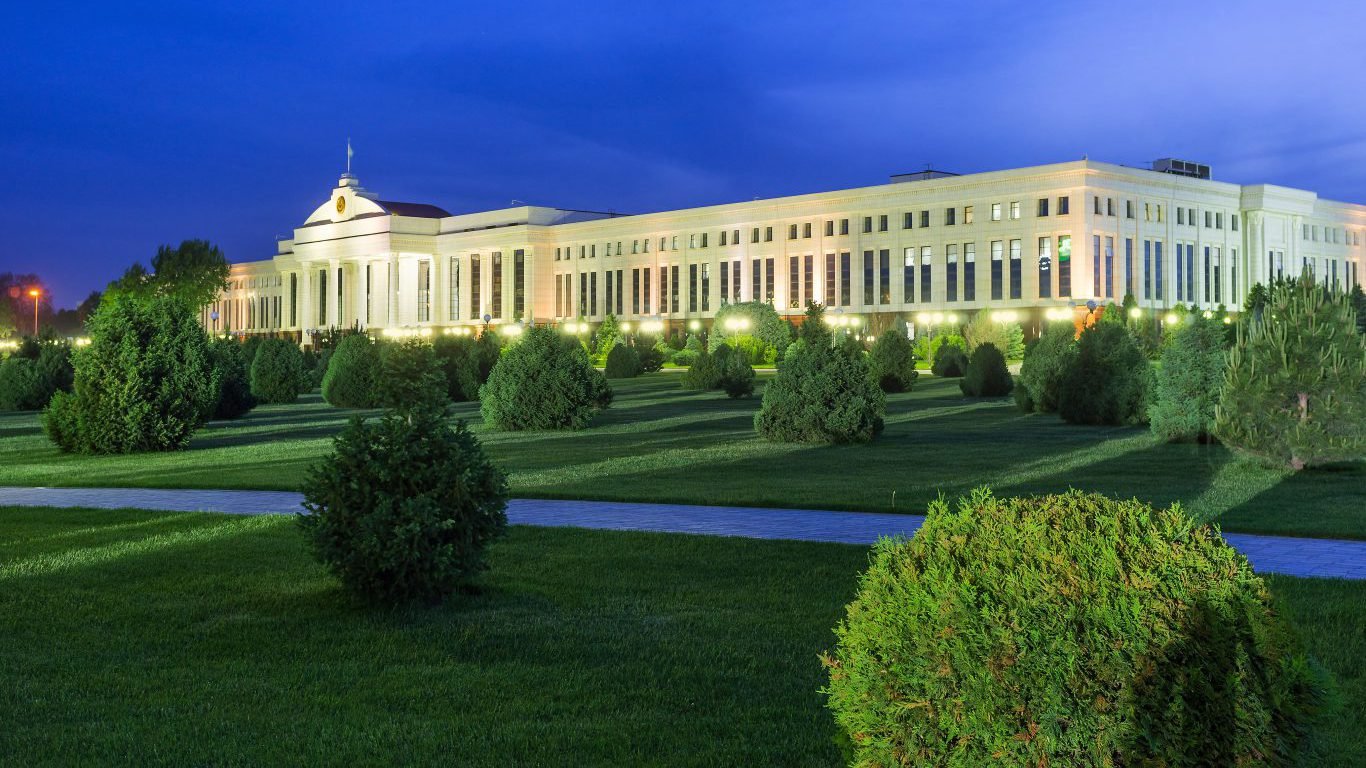
31. Uzbekistan
> Presidential election of of 2015: 18,942,349 total votes
> Population: 30,492,800 (total) 19,248,000 (voting age)
> Voter turnout: 91.1%
> Compulsory voting?: No
Islam Karimov’s re-election as president is criticized by observers over irregularities and lack of competition. He has been president of Uzbekistan since 1990.
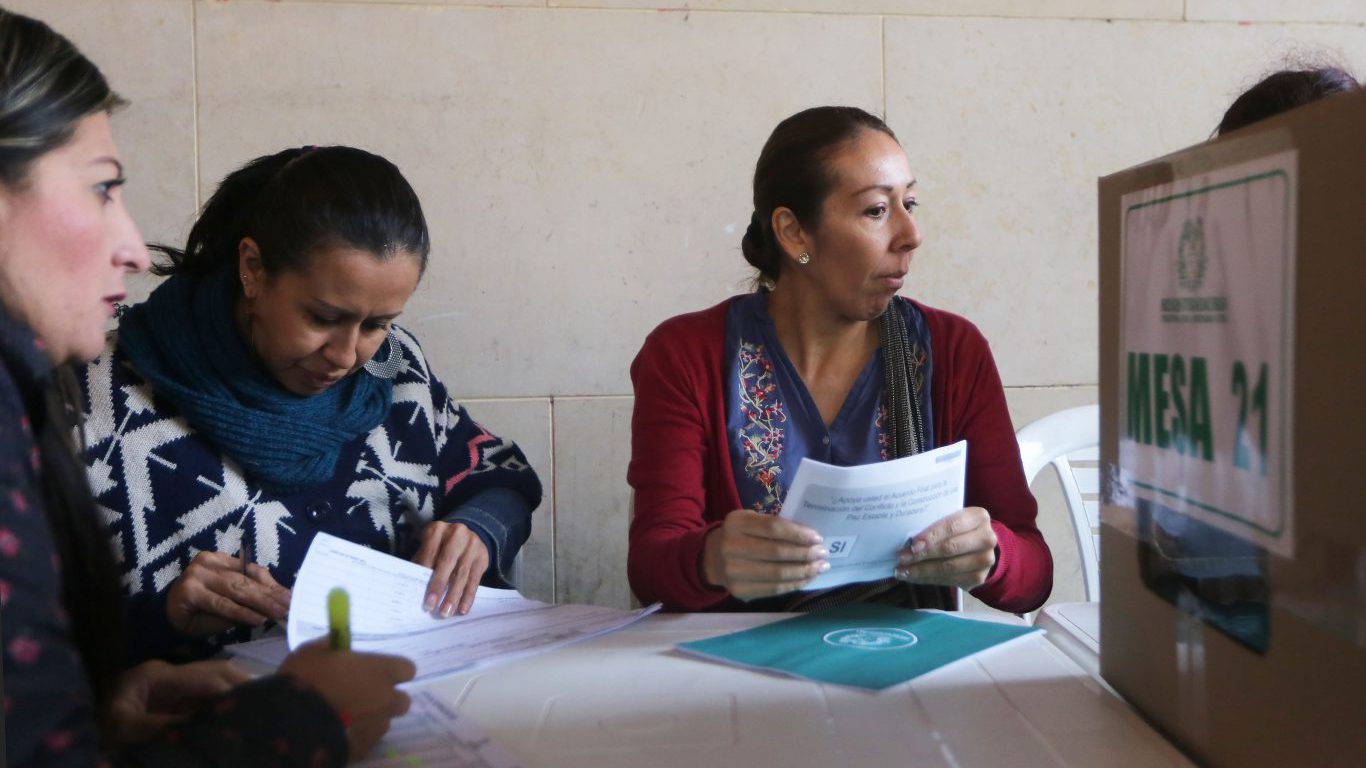
30. Colombia
> Presidential election of of 2018: 19,636,714 total votes
> Population: 48,168,996 (total) 34,279,624 (voting age)
> Voter turnout: 53.4%
> Compulsory voting?: No
Juan Manuel Santos is re-elected president. The result is seen by political observers as an endorsement of the president’s continuing peace talks with rebel group FARC.
[in-text-ad]
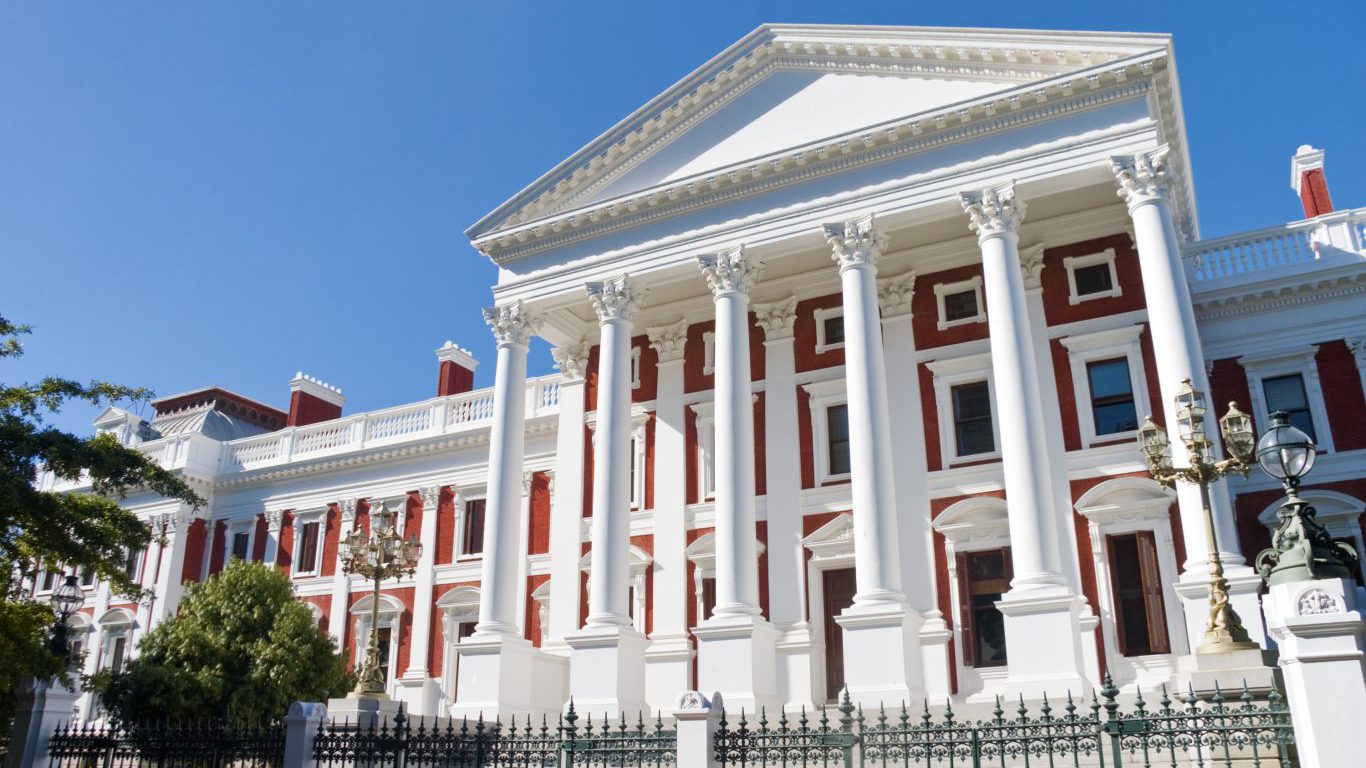
29. South Africa
> Parliamentary election of of 1994: 19,726,610 total votes
> Population: 40,436,000 (total) 23,063,910 (voting age)
> Voter turnout: 86.9%
> Compulsory voting?: No
In the first elections in South Africa in which citizens of all races were allowed to take part, former political prisoner Nelson Mandela is elected the first black South African president by the National Assembly and is inaugurated the next day.
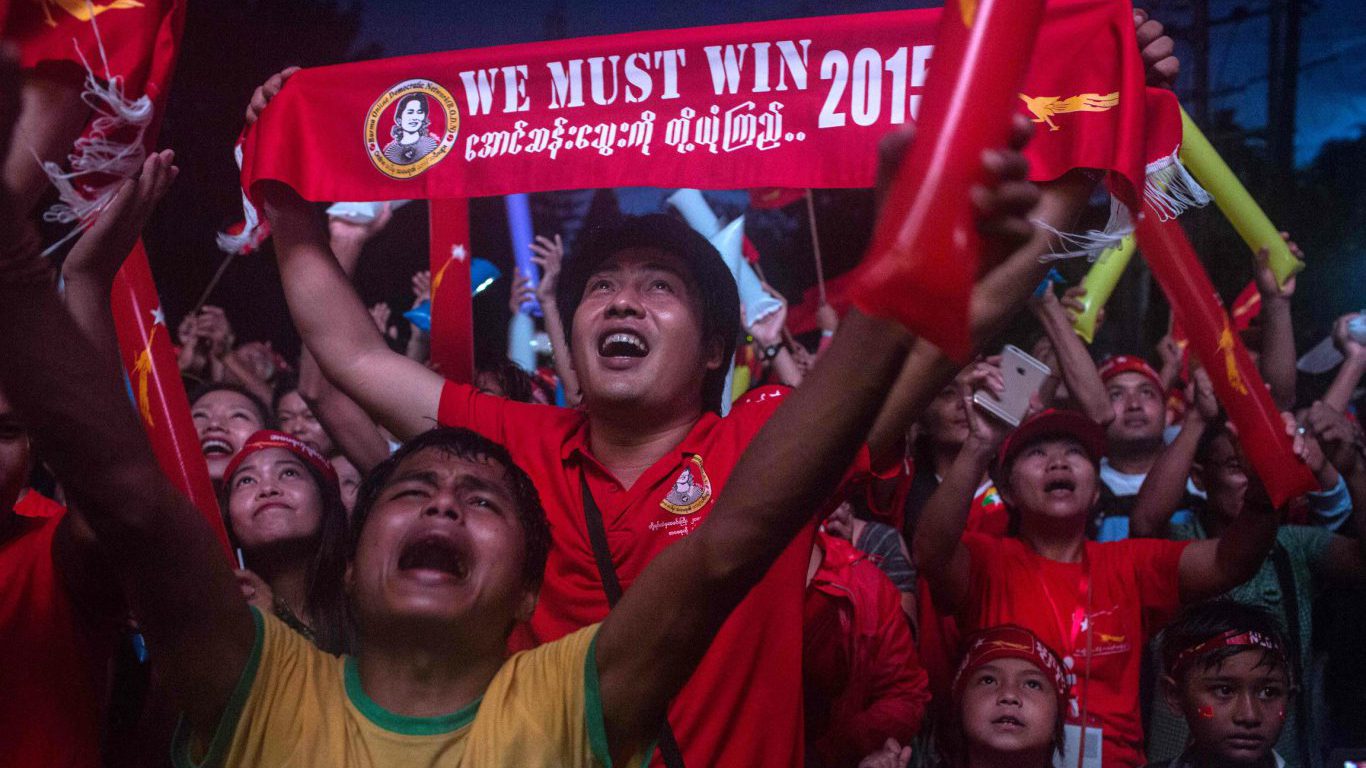
28. Myanmar
> Parliamentary election of of 2015: 23,911,784 total votes
> Population: 56,320,206 (total) 38,646,398 (voting age)
> Voter turnout: 69.7%
> Compulsory voting?: No
In the country’s first national vote that ended 50 years of military rule, Nobel Peace Prize winner Aung San Suu Kyi’s National League for Democracy party wins a landslide victory.

27. Poland
> Parliamentary election of of 1980: 24,816,304 total votes
> Population: 35,578,016 (total) N/A (voting age)
> Voter turnout: 98.9%
> Compulsory voting?: No
Election results are controlled by the communist government, which is beginning to confront the emerging Solidarity movement.
[in-text-ad-2]
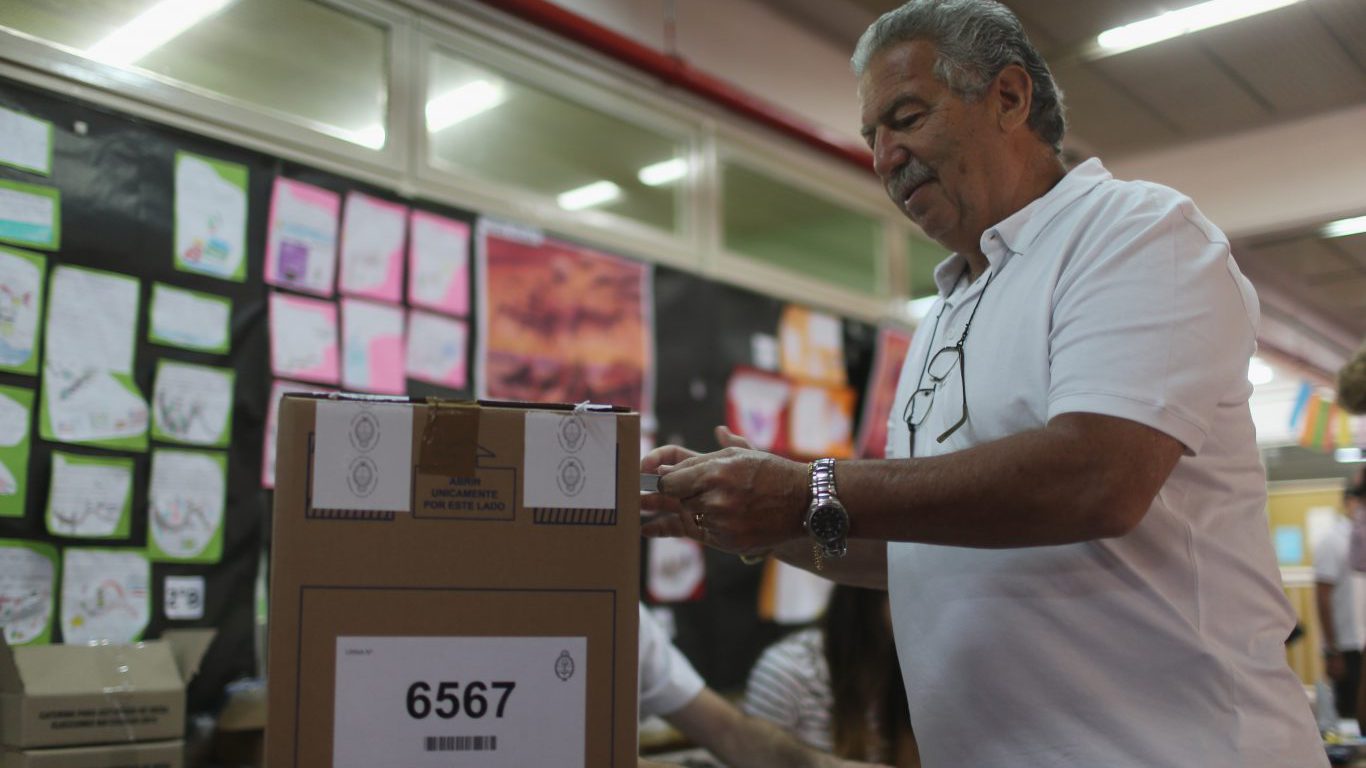
26. Argentina
> Parliamentary election of of 2015: 26,048,446 total votes
> Population: 43,431,886 (total) 31,996,332 (voting age)
> Voter turnout: 81.1%
> Compulsory voting?: Yes
Argentina shifts to the center-right after 12 years of leftist government by electing Buenos Aires mayor Mauricio Macri as president.
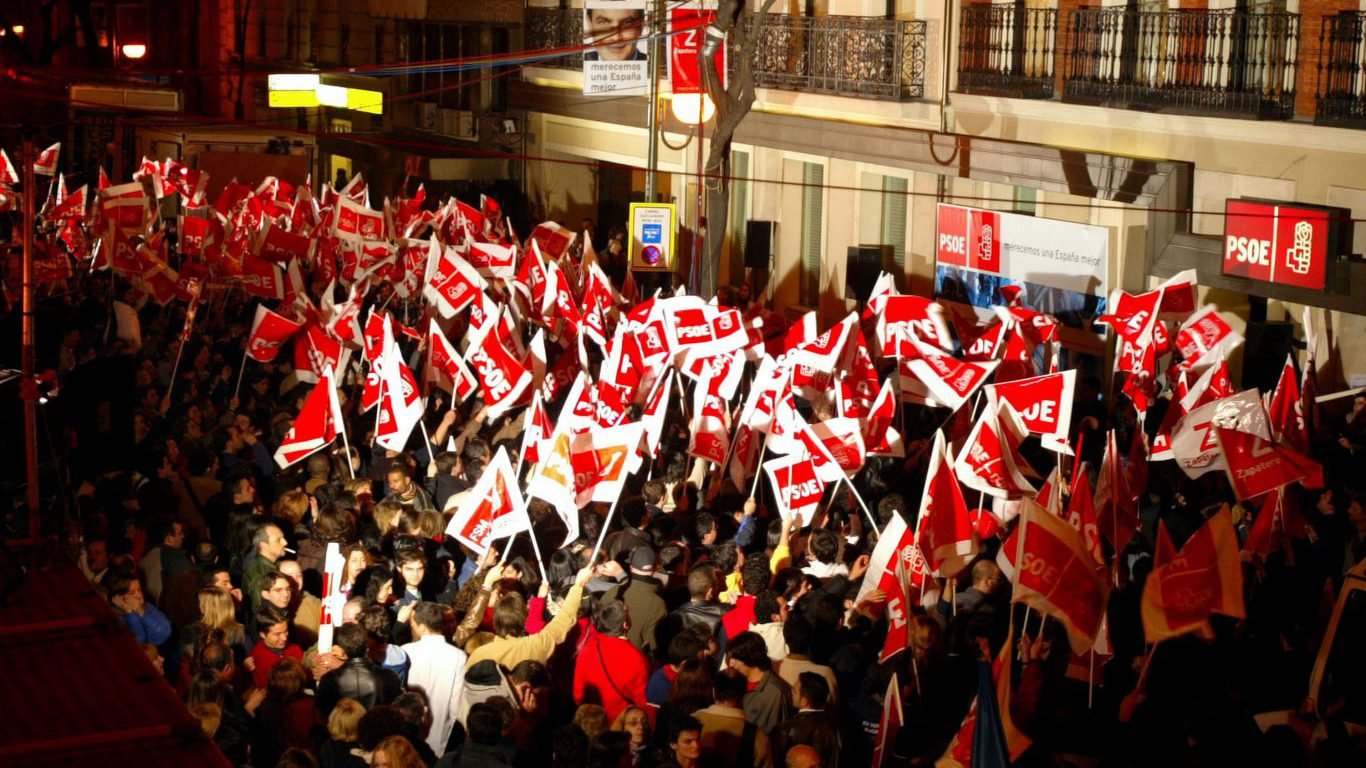
25. Spain
> Parliamentary election of of 2004: 26,155,436 total votes
> Population: 42,345,342 (total) 34,304,048 (voting age)
> Voter turnout: 75.7%
> Compulsory voting?: No
Spanish Socialist Workers’ Party gets 43% of the popular vote, gaining 39 seats in the Congress of Deputies for a total of 164 seats.
[in-text-ad]

24. Ukraine
> Presidential election of of 2004: 29,068,971 total votes
> Population: 47,732,079 (total) 37,206,111 (voting age)
> Voter turnout: 77.3%
> Compulsory voting?: No
Viktor Yushchenko wins 52% of the vote after two runoff elections due to contested voting results.
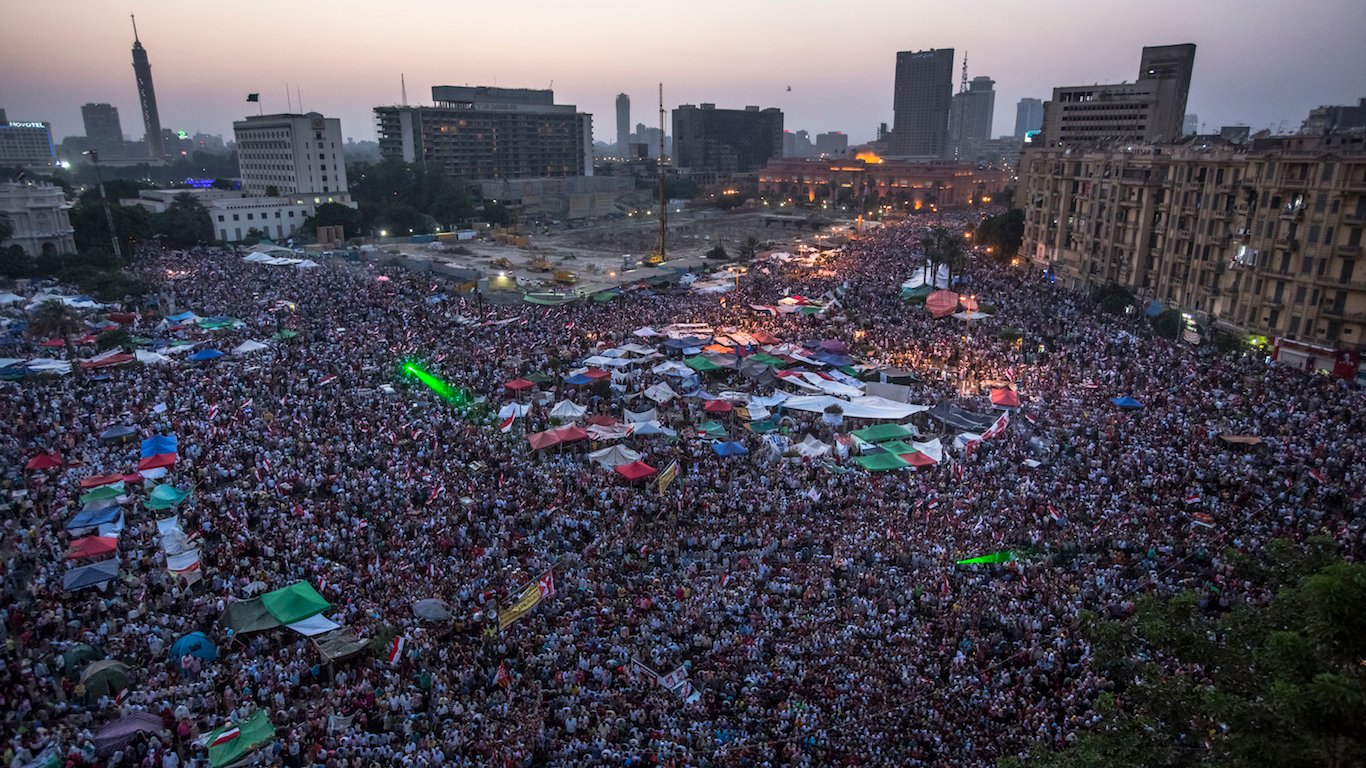
23. Egypt
> Parliamentary election of of 2012: 29,279,884 total votes
> Population: 83,688,164 (total) 53,245,955 (voting age)
> Voter turnout: 62.0%
> Compulsory voting?: Yes
Nearly 30 million votes are cast in the first election after Hosni Mubarak’s dismissal as president and the dissolution of Parliament by the Supreme Council of the Armed Forces.

22. Korea, Republic of
> Presidential election of of 2017: 32,807,908 total votes
> Population: 51,181,299 (total) 42,104,992 (voting age)
> Voter turnout: 77.2%
> Compulsory voting?: No
Democratic candidate Moon Jae-in wins 41% of the vote.
[in-text-ad-2]
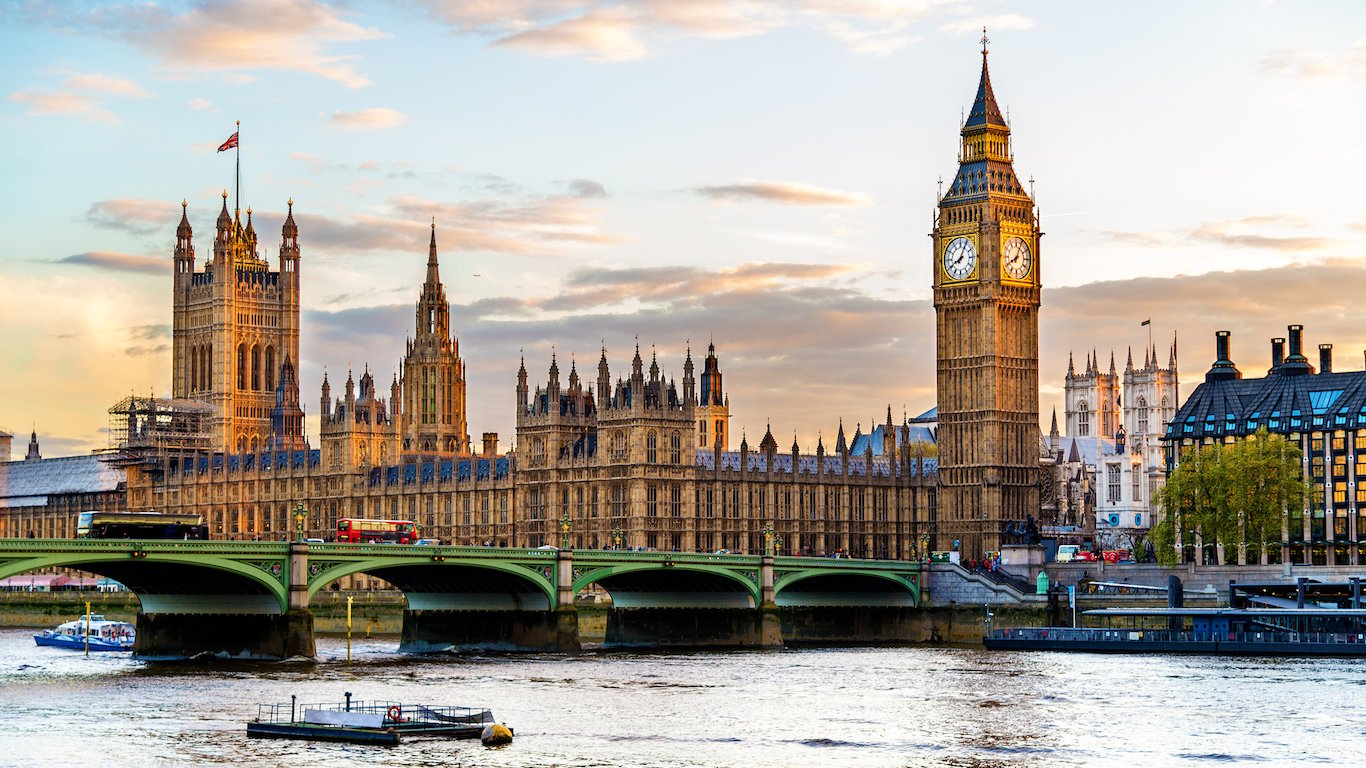
21. United Kingdom
> Parliamentary election of of 1992: 33,653,800 total votes
> Population: 57,998,000 (total) 44,658,460 (voting age)
> Voter turnout: 77.8%
> Compulsory voting?: No
Conservative Party maintains control of Parliament for fourth consecutive election.
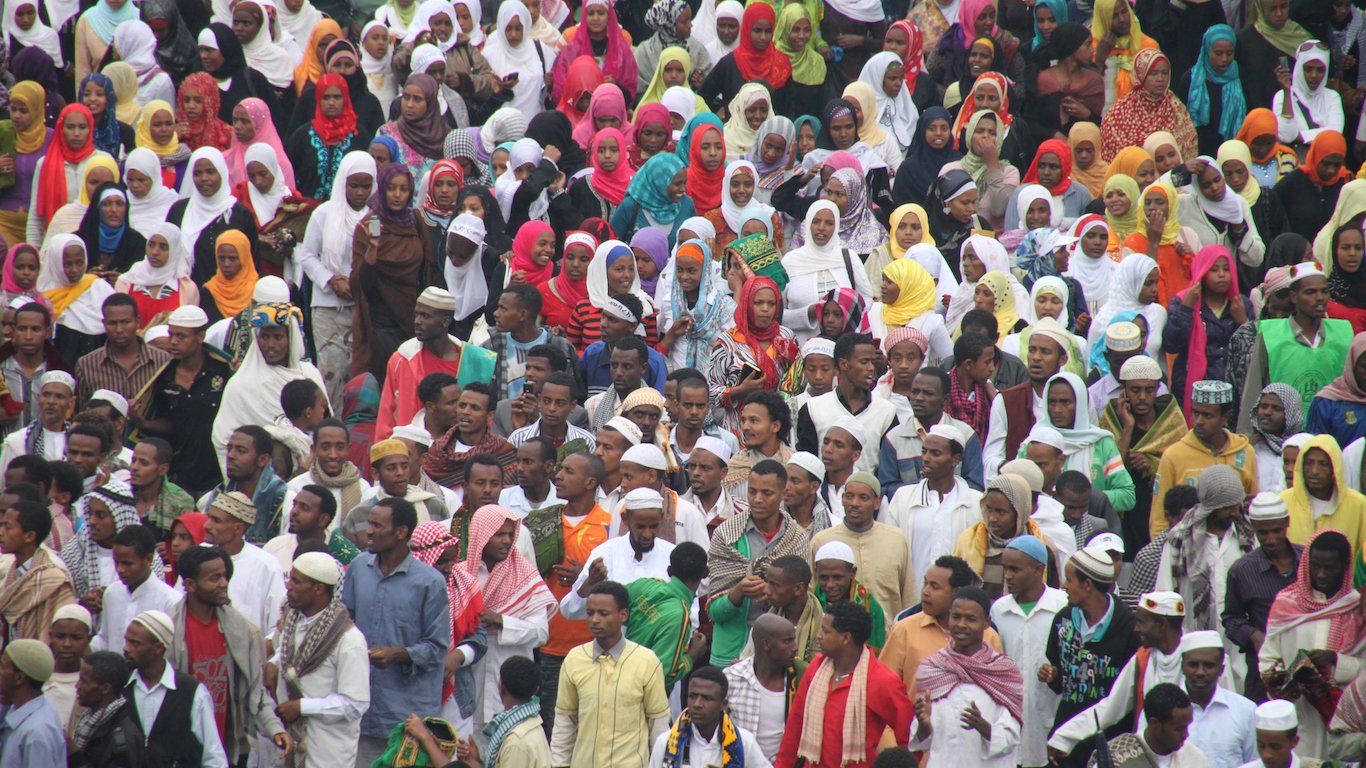
20. Ethiopia
> Parliamentary election of of 2015: 34,351,444 total votes
> Population: 99,465,819 (total) 49,011,364 (voting age)
> Voter turnout: 93.2%
> Compulsory voting?: No
Ethiopian People’s Revolutionary Democratic Front wins a majority of seats in the House of People’s Representatives.
[in-text-ad]
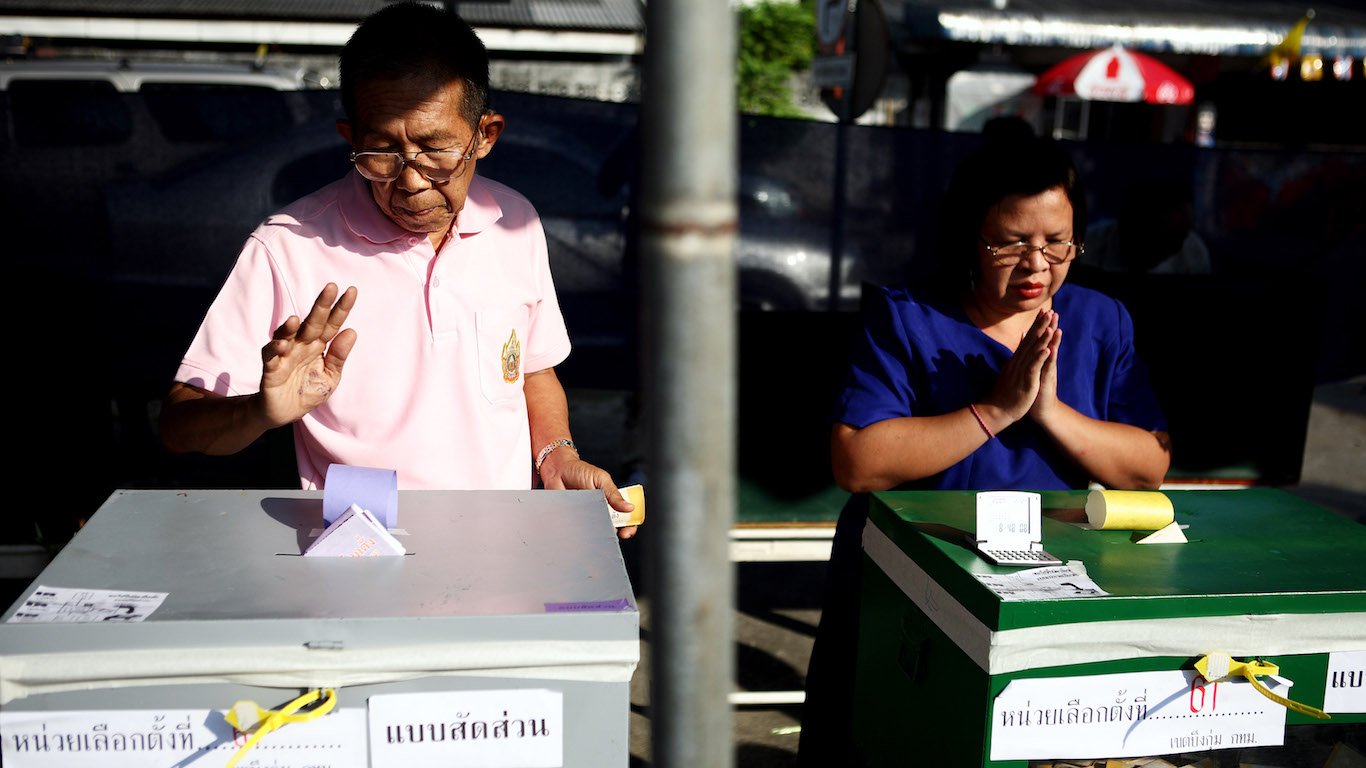
19. Thailand
> Parliamentary election of of 2007: 35,844,272 total votes
> Population: 63,937,800 (total) 47,021,213 (voting age)
> Voter turnout: 78.5%
> Compulsory voting?: Yes
Close to 36 million votes are cast in the first election after the Council for National Security overthrew the elected government in 2006.

18. France
> Presidential election of of 2007: 37,342,004 total votes
> Population: 63,713,926 (total) 48,651,555 (voting age)
> Voter turnout: 84.0%
> Compulsory voting?: No
Nicolas Sarkozy defeats Ségolène Royal for president with 53% of the vote.
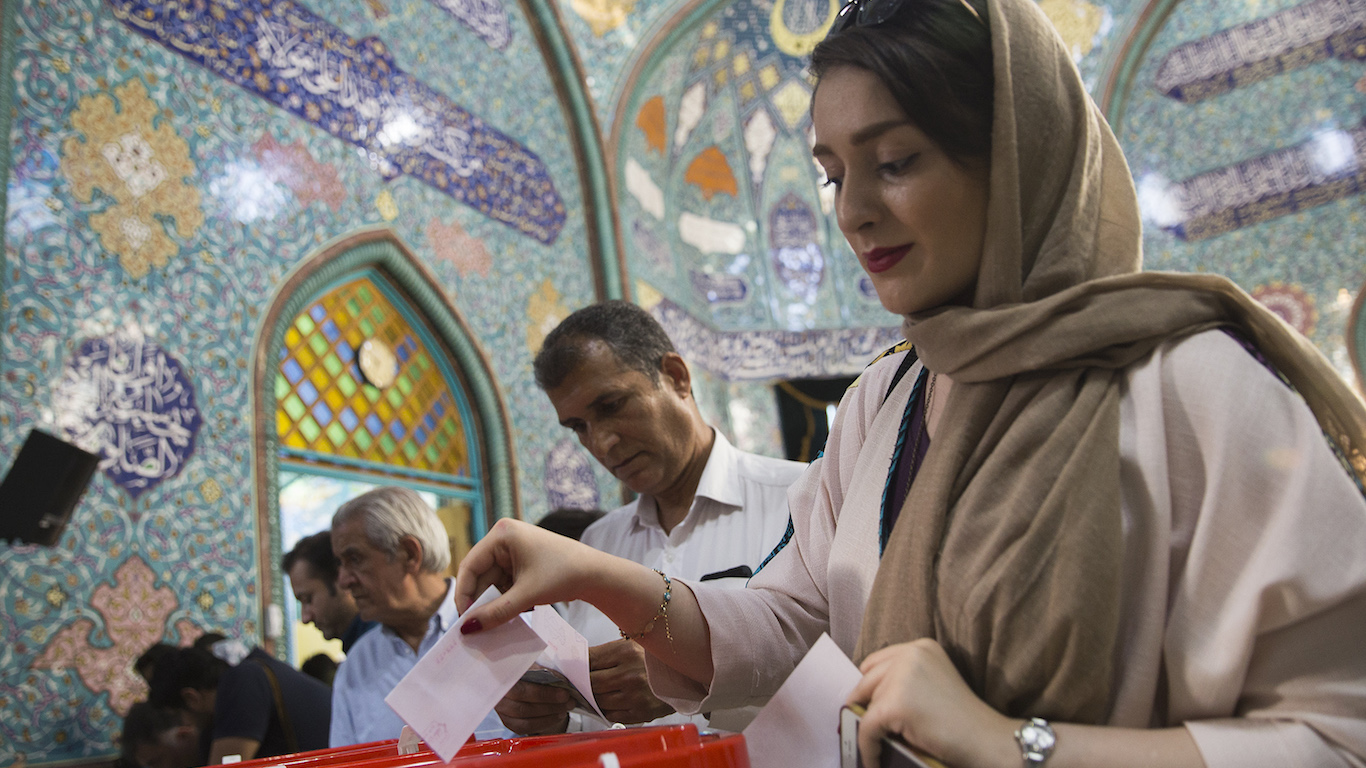
17. Iran, Islamic Republic of
> Presidential election of of 2017: 41,366,085 total votes
> Population: 83,768,457 (total) 60,447,043 (voting age)
> Voter turnout: 73.3%
> Compulsory voting?: No
Reform candidate Hassan Rouhani is re-elected with 57% of the vote.
[in-text-ad-2]

16. Italy
> Parliamentary election of of 1992: 41,479,764 total votes
> Population: 56,859,000 (total) 44,918,610 (voting age)
> Voter turnout: 87.4%
> Compulsory voting?: Yes
A strong majority of Italians vote in the first election held with the Democratic Party of the Left, replacing the disbanded Italian Communist Party.
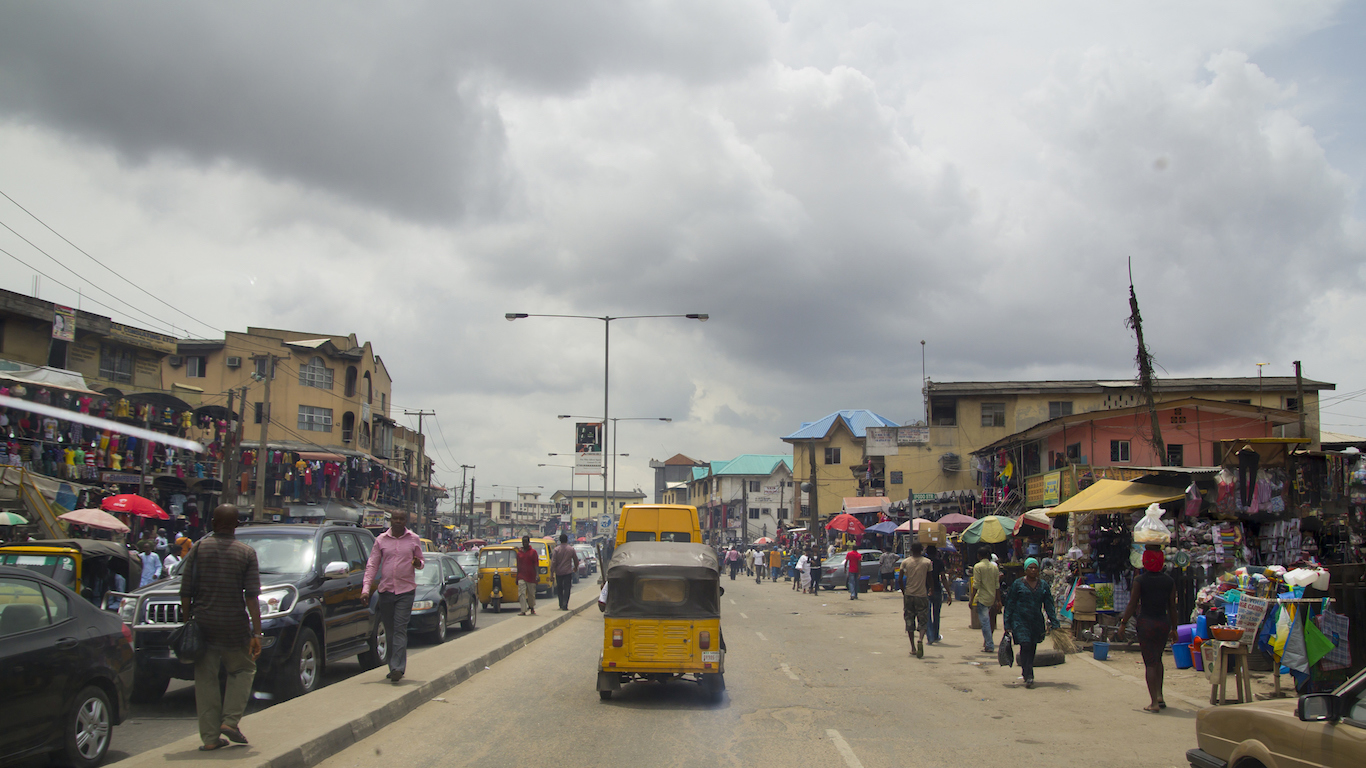
15. Nigeria
> Presidential election of of 2003: 42,018,735 total votes
> Population: 129,934,911 (total) 64,319,246 (voting age)
> Voter turnout: 69.1%
> Compulsory voting?: No
Olusegun Obasanjo wins the presidency, but no opposition party recognizes the results due to widespread electoral fraud.
[in-text-ad]
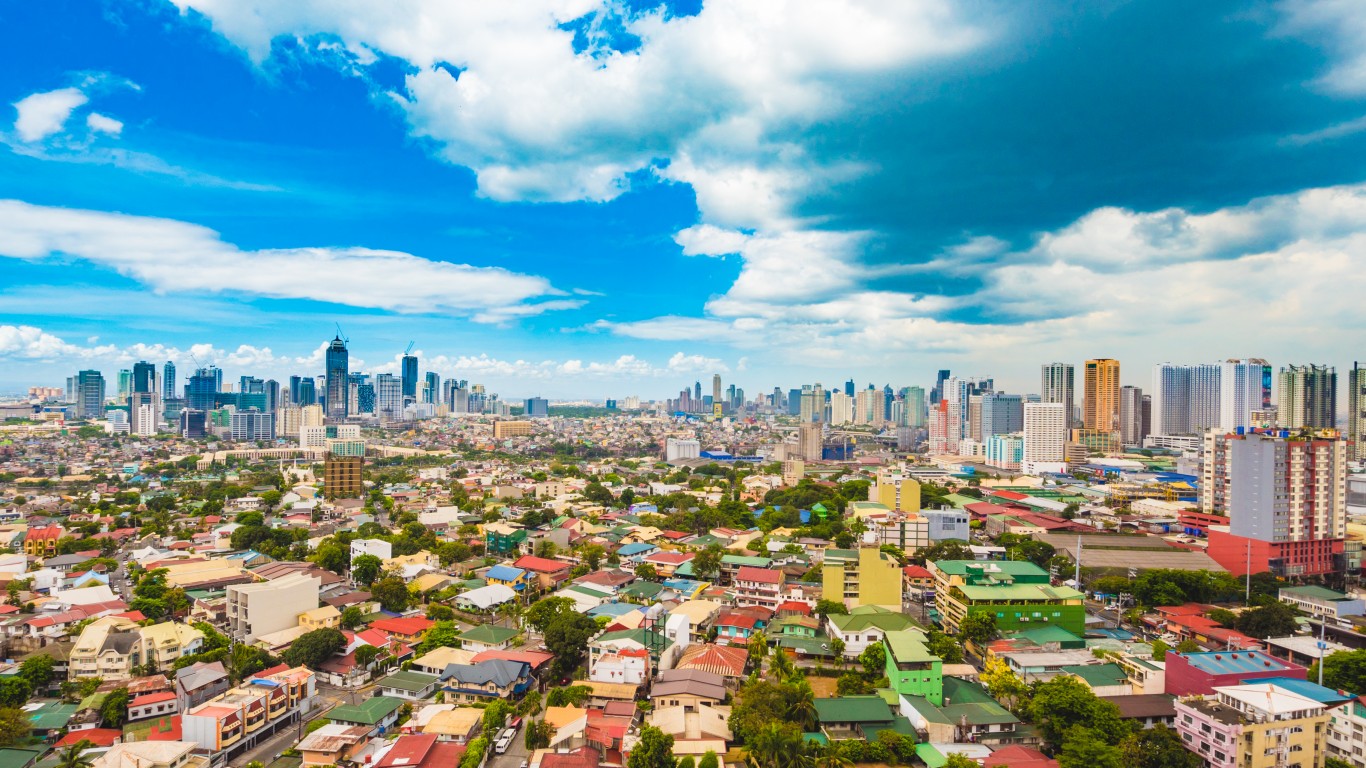
14. Philippines
> Parliamentary election of of 2016: 44,549,212 total votes
> Population: 102,624,209 (total) 61,728,990 (voting age)
> Voter turnout: 82.0%
> Compulsory voting?: No
Rodrigo Duterte wins the presidency with 39% of the vote.
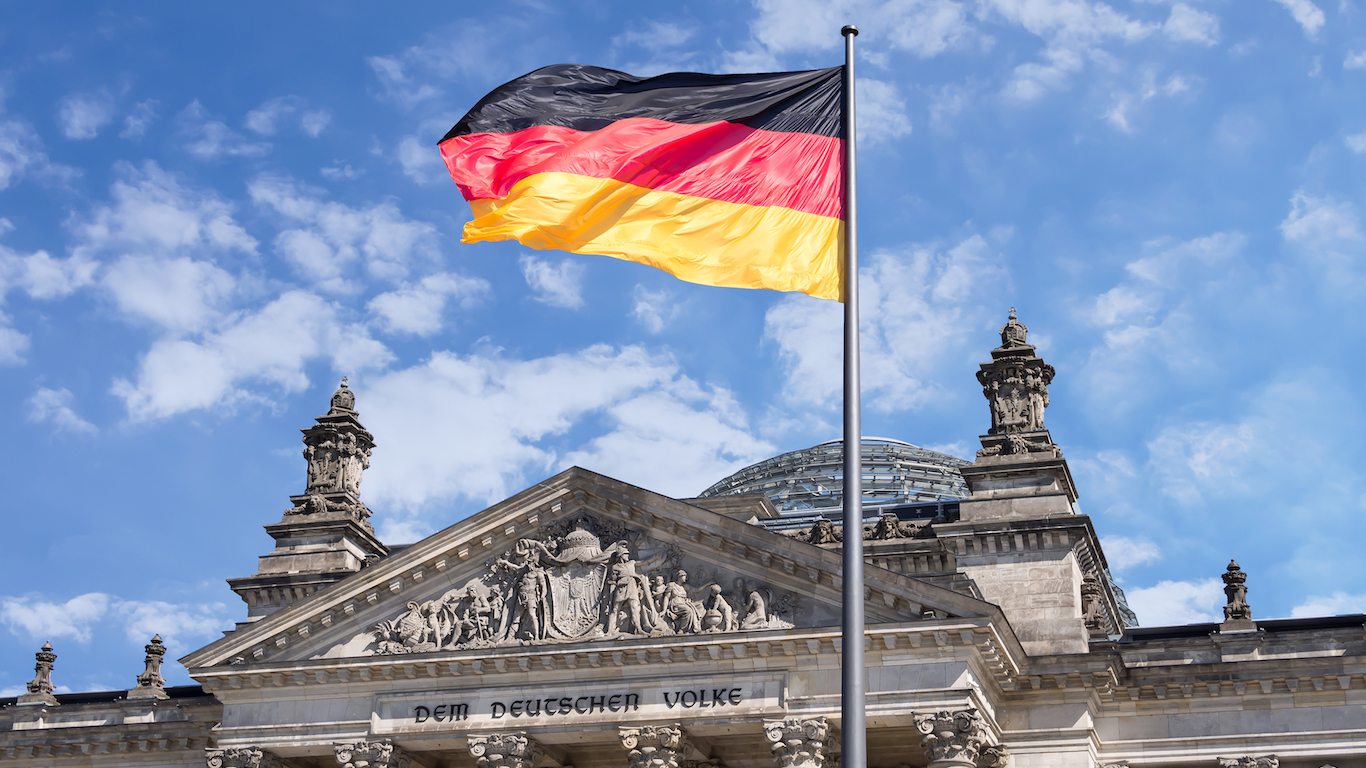
13. Germany
> Parliamentary election of of 1998: 49,947,087 total votes
> Population: 82,172,259 (total) 66,313,874 (voting age)
> Voter turnout: 82.2%
> Compulsory voting?: No
Social Democratic Party becomes the largest faction in parliament with 41% of seats.
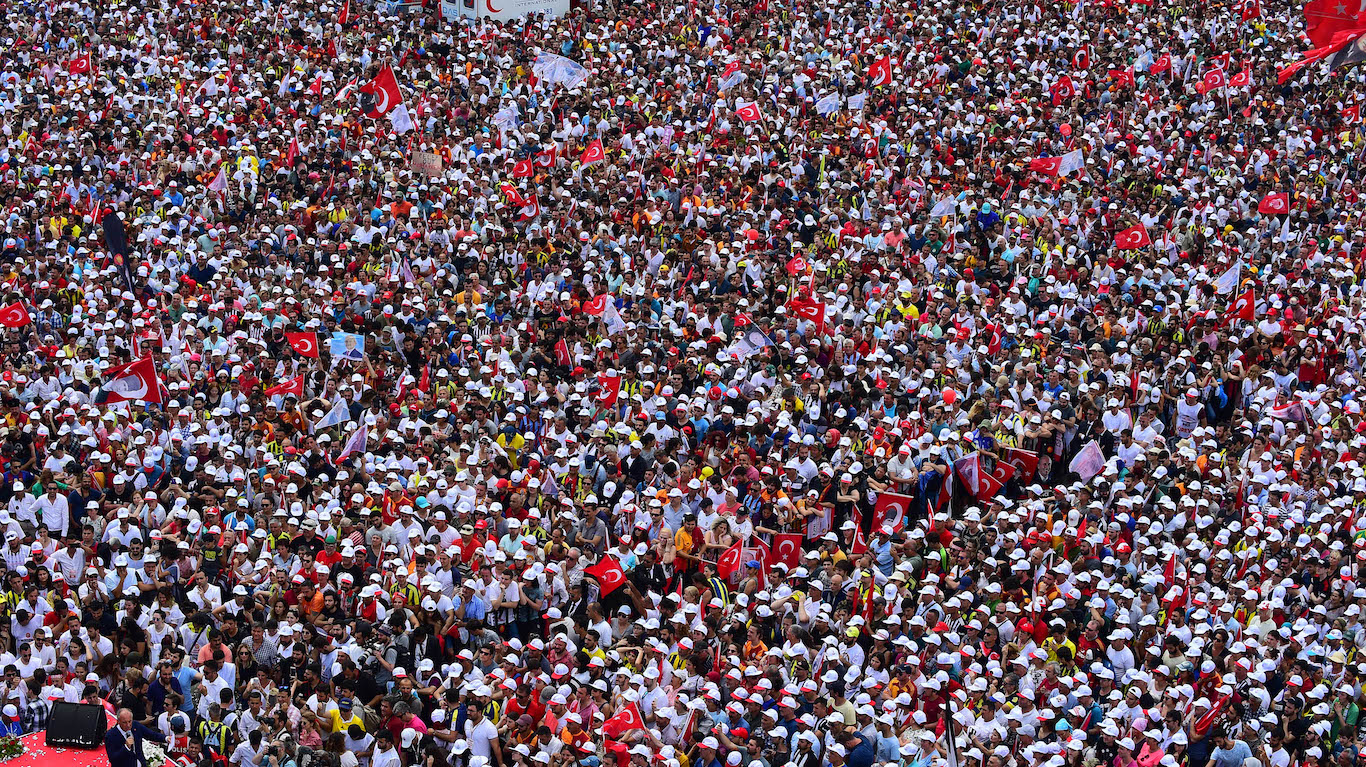
12. Turkey
> Parliamentary election of of 2018: 51,188,524 total votes
> Population: 81,257,239 (total) 57,547,968 (voting age)
> Voter turnout: 86.2%
> Compulsory voting?: Yes
In the aftermath of an attempted coup in 2016, President Recep Tayyip Erdogan is re-elected to a five-year term with about 53% of the vote.
[in-text-ad-2]
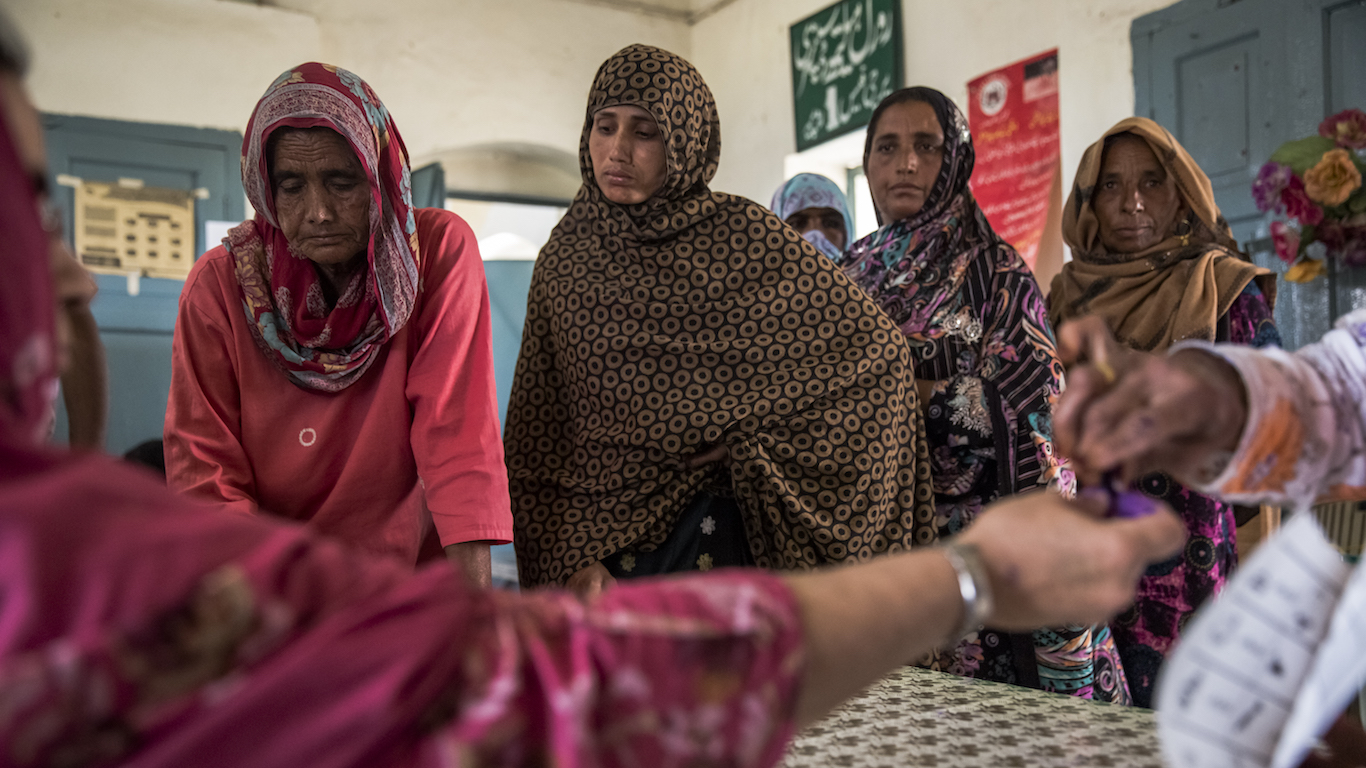
11. Pakistan
> Parliamentary election of of 2018: 53,123,733 total votes
> Population: 207,862,518 (total) 130,632,404 (voting age)
> Voter turnout: 50.1%
> Compulsory voting?: No
The Tehreek-e-Insaf party secures victory by defeating the Pakistan Muslim League-Nawaz amid claims the election is rigged in favor of the winning side.
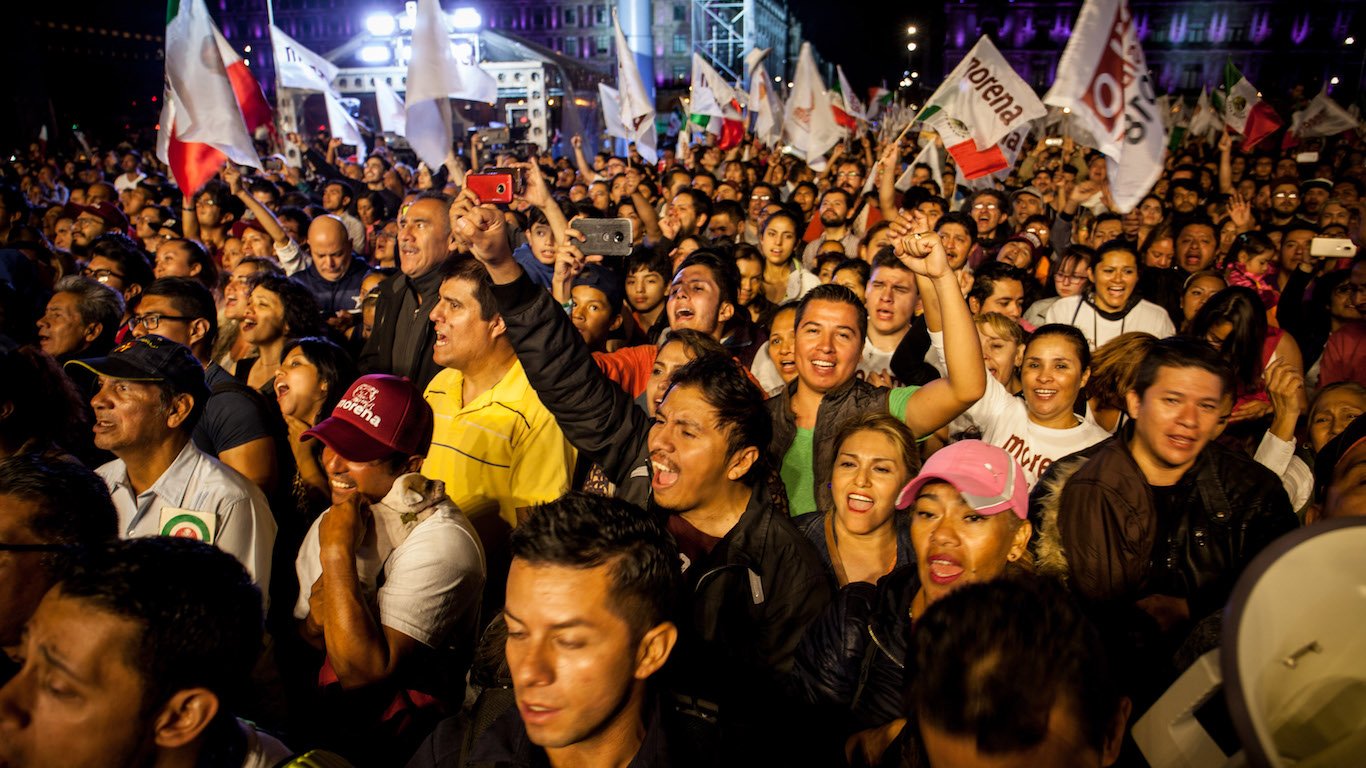
10. Mexico
> Presidential election of of 2018: 56,611,027 total votes
> Population: 125,959,205 (total) 85,801,675 (voting age)
> Voter turnout: 63.4%
> Compulsory voting?: Yes
Mexico swings to the left after electing 64-year-old Andrés Manuel López Obrador as president.
[in-text-ad]
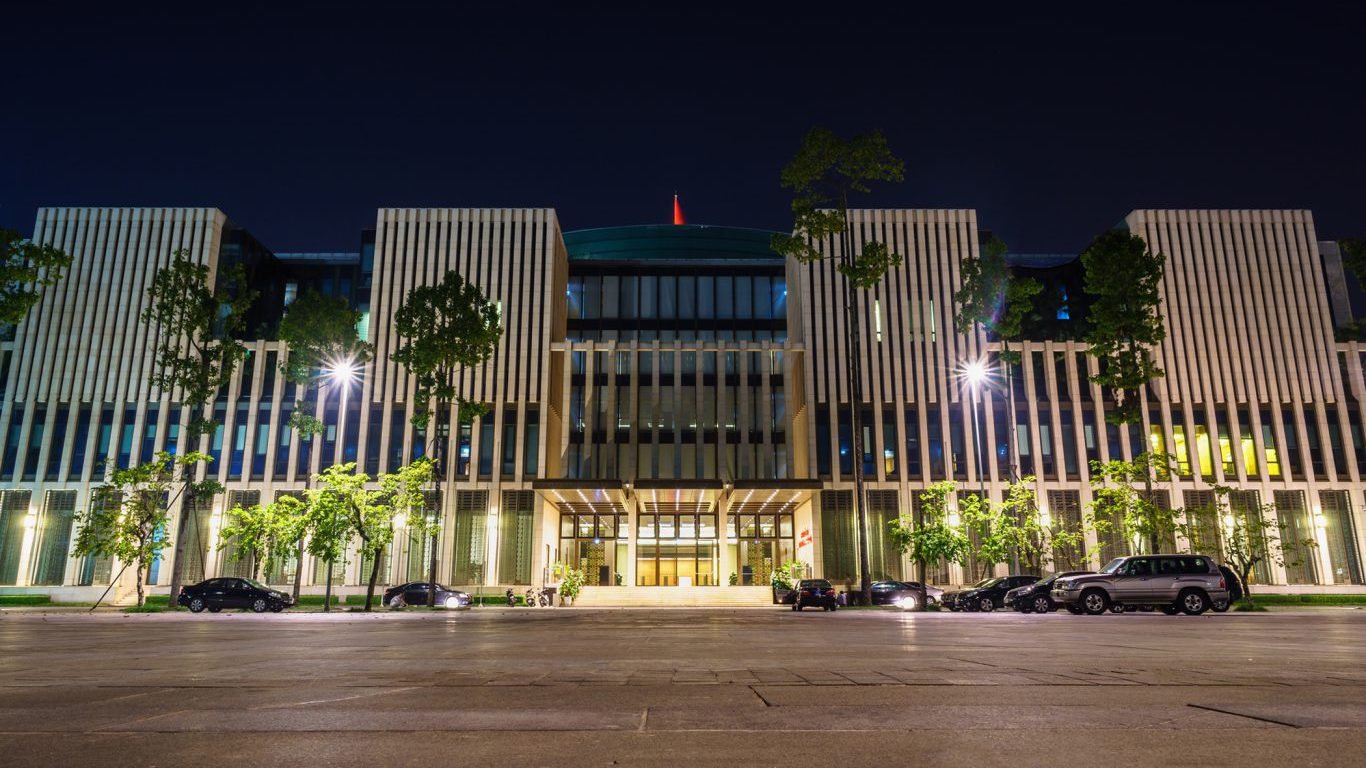
9. Vietnam
> Parliamentary election of of 2016: 67,000,000 total votes
> Population: 95,261,021 (total) 68,142,322 (voting age)
> Voter turnout: 99.3%
> Compulsory voting?: No
The Communist Party wins 95.75% of total vote.
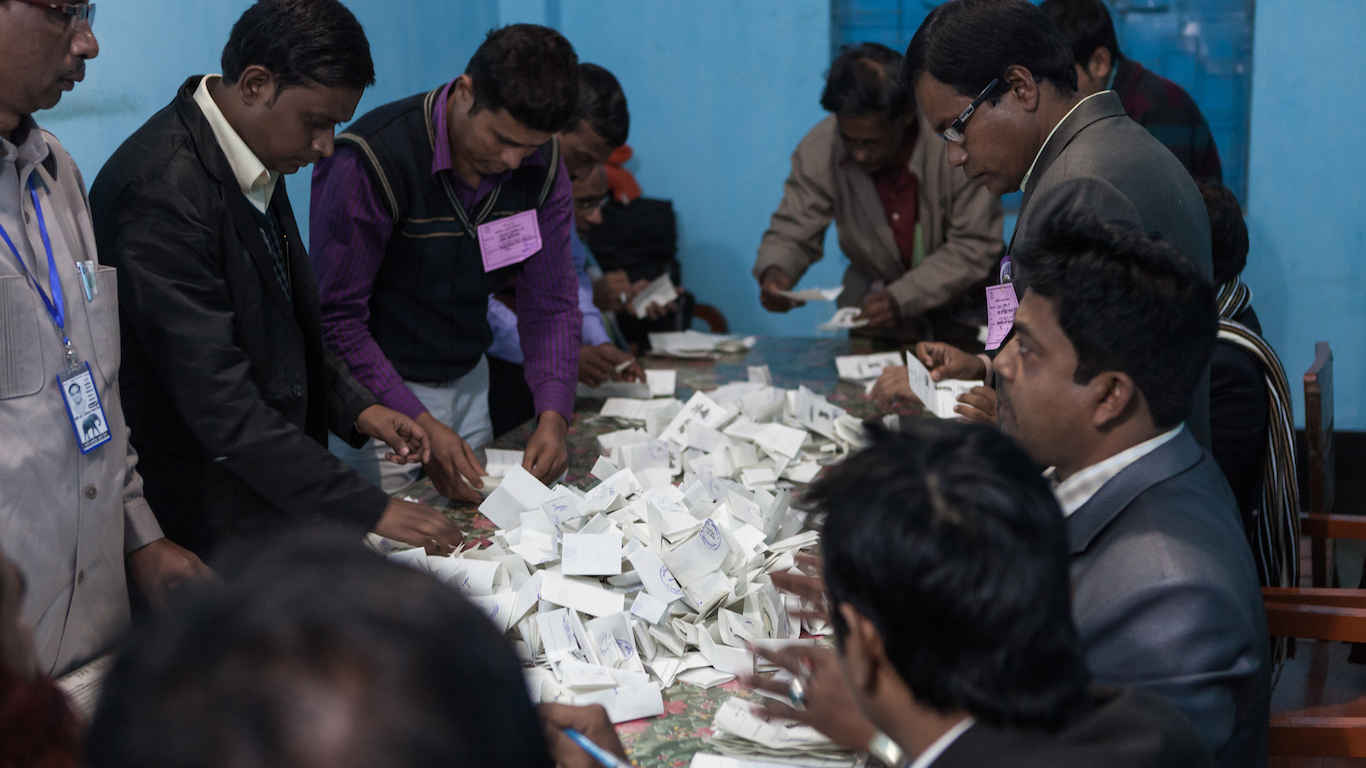
8. Bangladesh
> Parliamentary election of of 2008: 69,172,649 total votes
> Population: 151,289,991 (total) 87,634,867 (voting age)
> Voter turnout: 85.3%
> Compulsory voting?: No
Awami League Party (consisting of 14 different parties) wins 263 out of 300 seats in parliament.
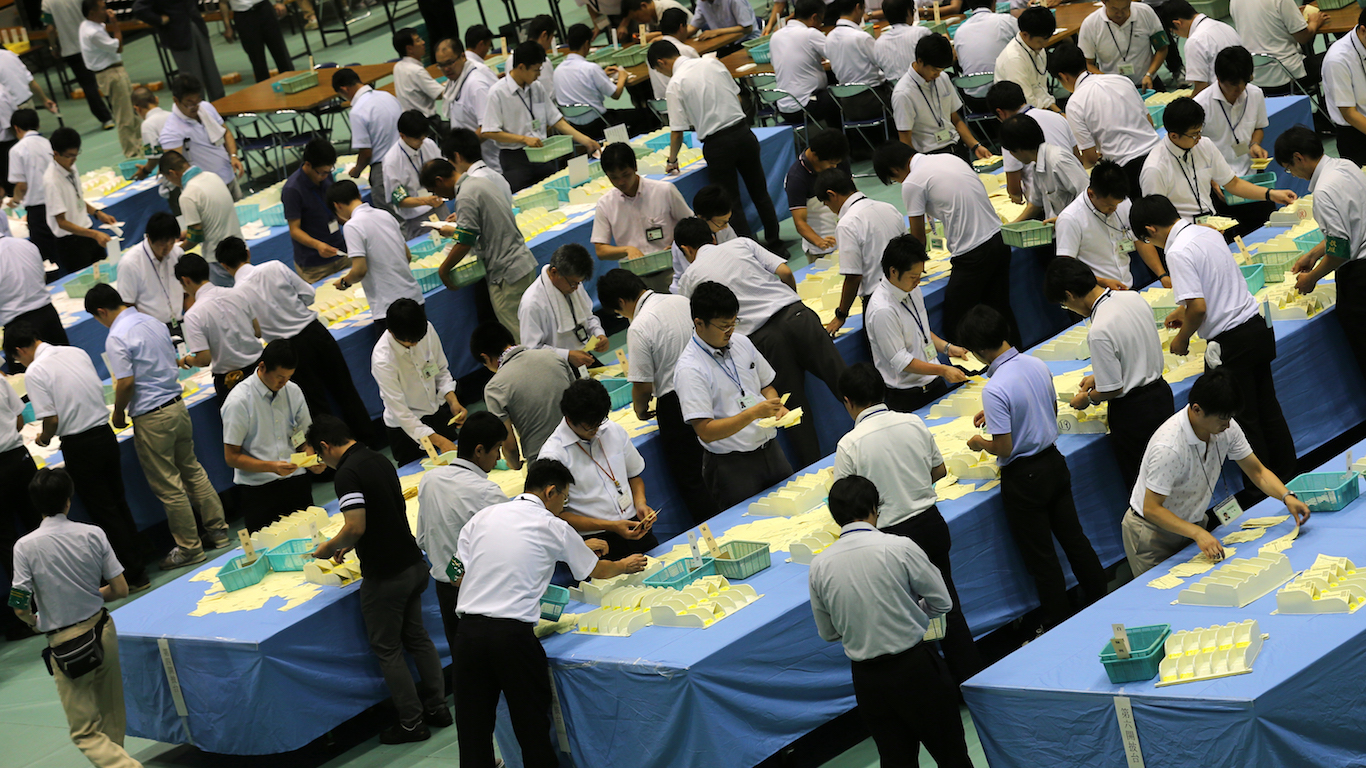
7. Japan
> Parliamentary election of of 2009: 72,003,538 total votes
> Population: 127,078,679 (total) 103,833,813 (voting age)
> Voter turnout: 69.3%
> Compulsory voting?: No
Democratic Party wins in a massive victory to take 221 of 308 seats in the House of Representatives.
[in-text-ad-2]
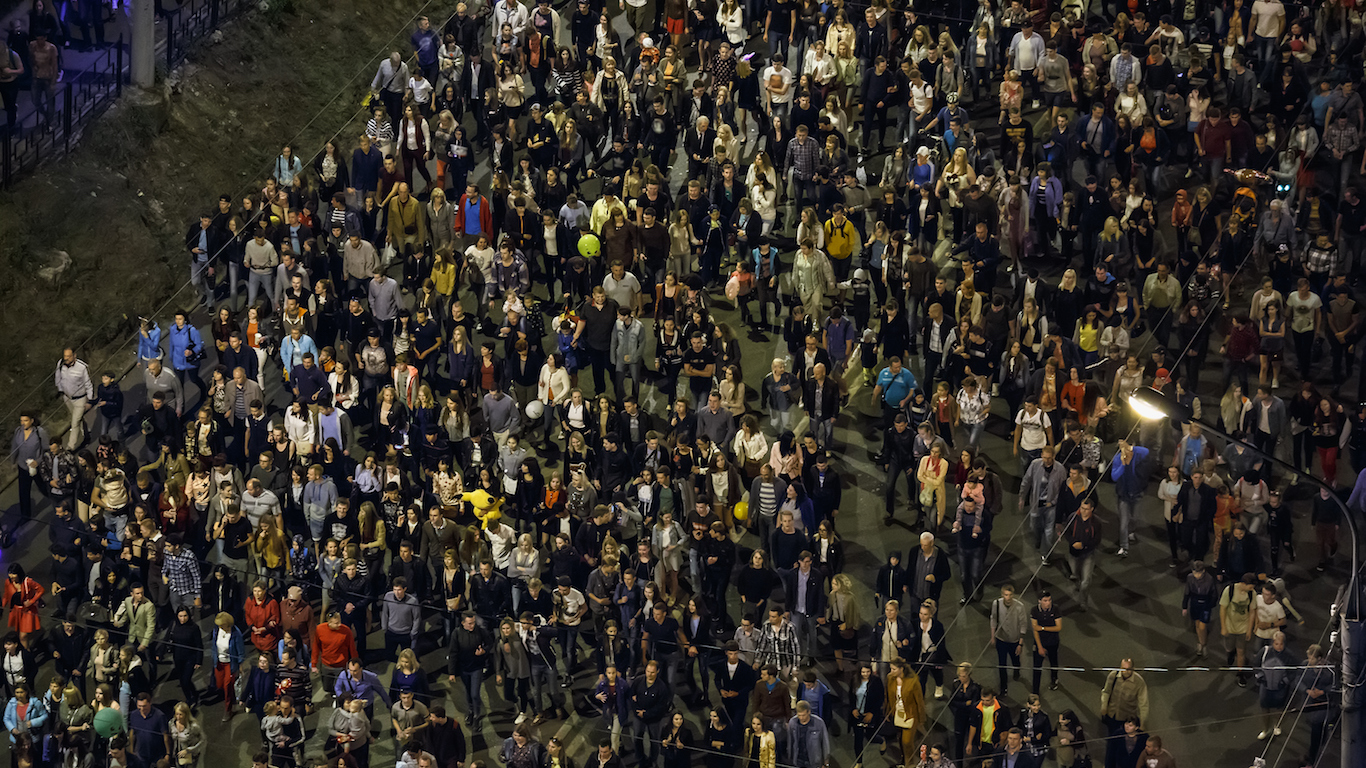
6. Russian Federation
> Presidential election of of 1991: 79,498,240 total votes
> Population: 148,624,000 (total) 108,495,520 (voting age)
> Voter turnout: 74.7%
> Compulsory voting?: No
The first ever presidential election results in Boris Yeltsin winning 58.6% of the vote.
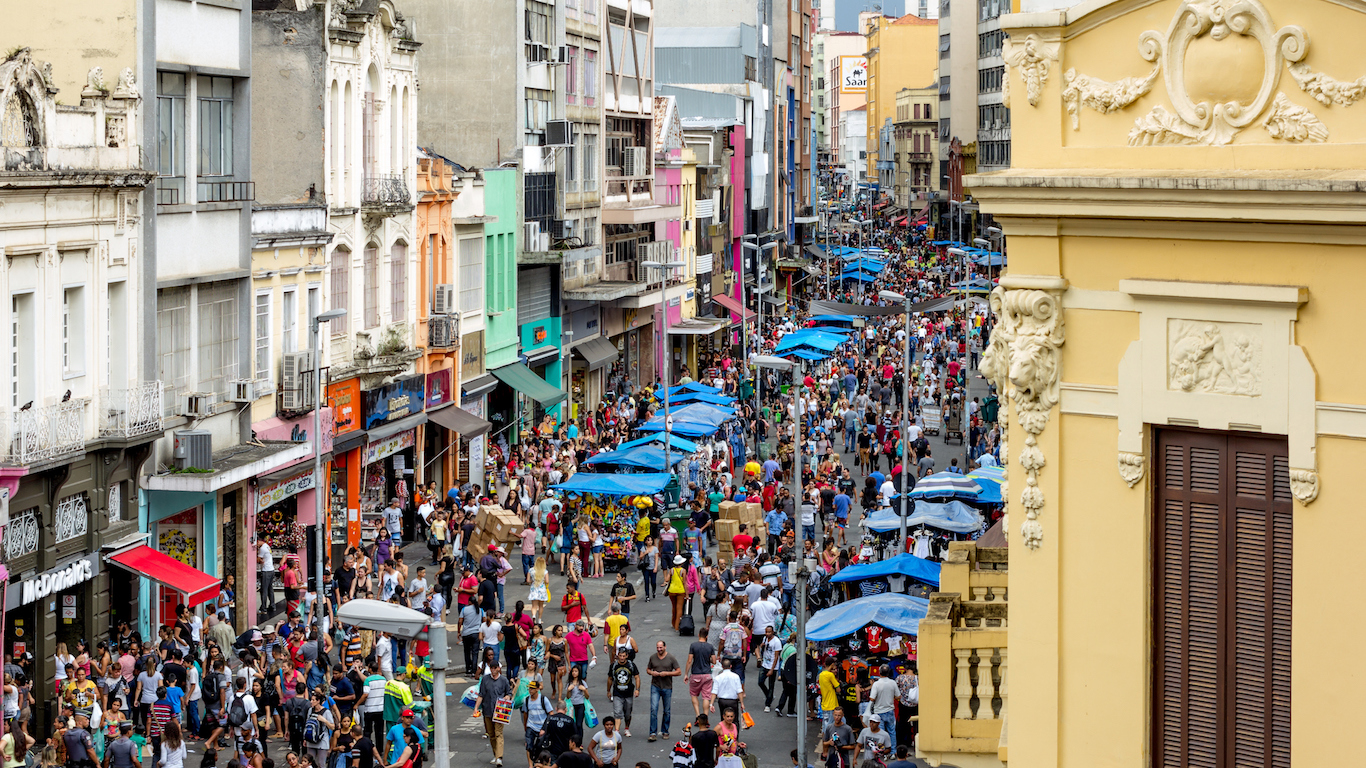
5. Brazil
> Parliamentary election of of 2014: 113,232,072 total votes
> Population: 202,656,788 (total) 150,803,268 (voting age)
> Voter turnout: 80.6%
> Compulsory voting?: Yes
Pro-government coalition parties win twice the amount of votes as the opposition coalition.
[in-text-ad]
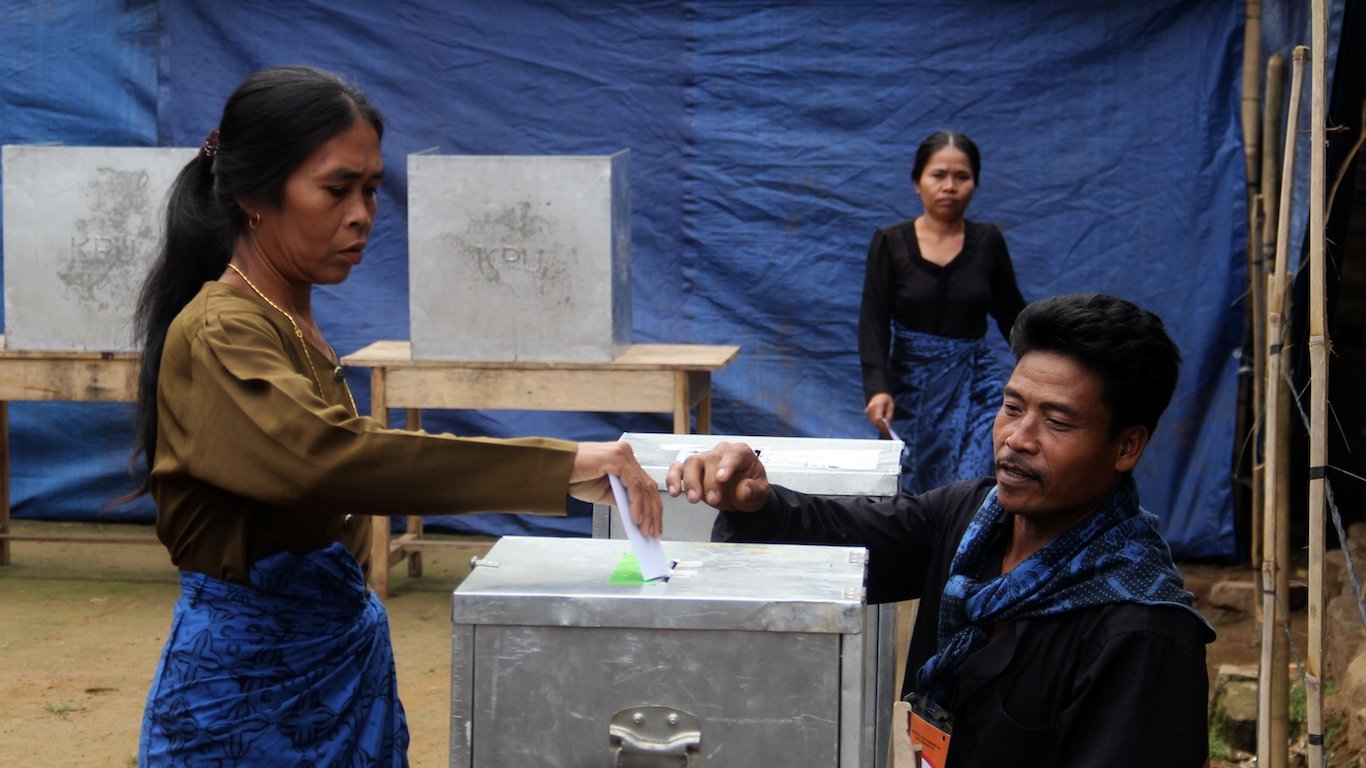
4. Indonesia
> Parliamentary election of of 2014: 139,573,927 total votes
> Population: 253,609,643 (total) 168,300,873 (voting age)
> Voter turnout: 75.1%
> Compulsory voting?: No
Democratic Party of Struggle wins majority of the votes and gains 15 seats.

3. United States
> Parliamentary election of of 2016: 140,114,503 total votes
> Population: 323,995,528 (total) 250,293,421 (voting age)
> Voter turnout: 65.4%
> Compulsory voting?: No
Republicans take control of the House and Senate.
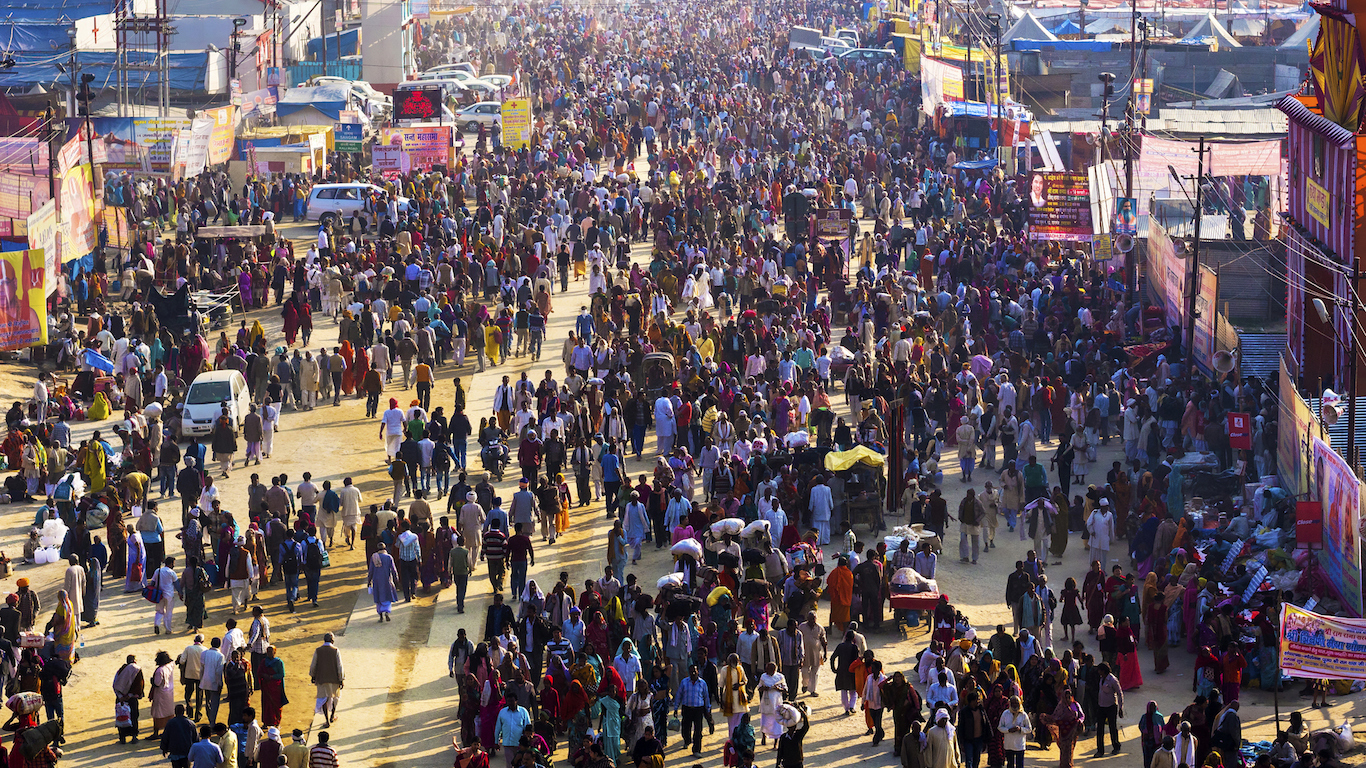
2. India
> Parliamentary election of of 2014: 553,801,801 total votes
> Population: 1,236,344,631 (total) 787,860,328 (voting age)
> Voter turnout: 66.4%
> Compulsory voting?: No
Bharatiya Janata Party (BJP) wins majority of seats in parliament (282).
[in-text-ad-2]
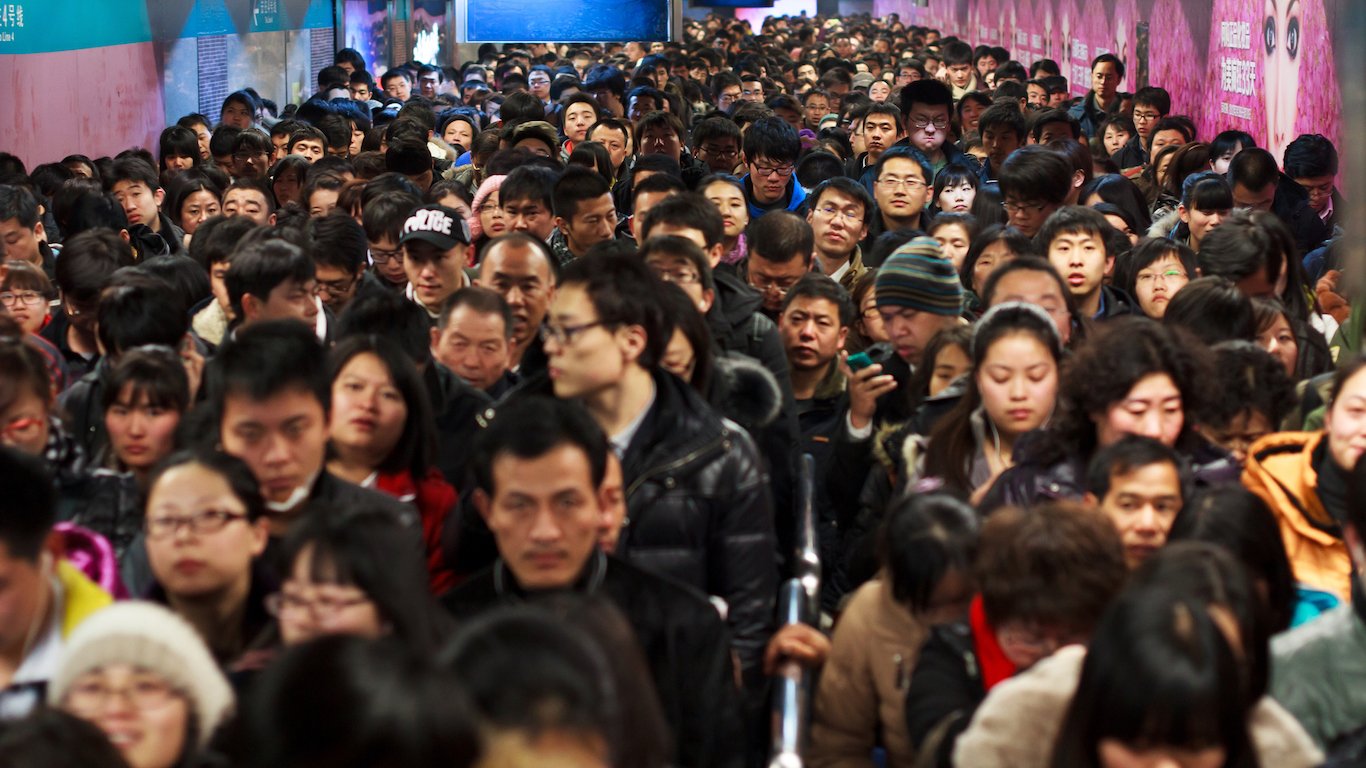
1. China
> Parliamentary election of of 2016: 900,000,000 total votes
> Population: 1,412,476,190 (total) N/A (voting age)
> Voter turnout: N/A
> Compulsory voting?: No
2.5 million Communist Party-approved deputies are appointed to local governing bodies.
Detailed Findings
The journey to gain universal suffrage has been a long and arduous one. Though many free men could vote in ancient Greece and Rome, that right was not extended to women or slaves. For long stretches of history, power was held by royalty and the aristocracy. That began to change after the Enlightenment and philosophers such as John Locke, who believed the power to govern had to be conferred on rulers by the people.
In colonial America, only white Protestant men who held property could vote. In the 19th century, the vote was extended to men who did not own property, and then to freed slaves by the 15th Amendment. In reality, though, African-Americans were kept away from the ballot box in the South by poll taxes, literacy tests, and intimidation tactics. They would not be able to truly exercise their right to vote until civil rights legislation was passed after World War II. Women did not get the right to vote until 1920, with the ratification of the 19th Amendment.
For one-party countries such as China and North Korea, the outcome on election day is not in doubt. Even so, people are compelled to vote in those countries, where the voter turnout is at or near 100%. In many multi-party countries such as Germany and Italy, the voter turnout tops 80% routinely, well above that of the United States.
In 22 countries, voter turnout percentages are boosted by compulsory voting requirements, mostly for those residents 18 years and older. Not voting in certain nations can have punitive consequences. In Australia, for example, citizens who don’t vote can get fined $20.
Methodology
To identify the biggest elections in the world, 24/7 Wall St. reviewed total votes cast in parliamentary and presidential elections between 1945 and the present, as well as referendums, from the Voter Turnout Database, a program produced by the Institute for Democratic and Electoral Assistance (IDEA). We also considered vote counts in elections held in nations IDEA does not track, such as North Korea, China, and Vietnam. Only the largest election in each country’s history was considered. Included on this list are elections that were held through Sept. 20 of this year. Four of the world’s most populous countries — Pakistan, Mexico, Turkey, and Colombia — held elections in 2018.
Population figures were obtained from the International Database of the U.S Census Bureau. Population data is adjusted during an election year to calculate the voting age population. In the case of Syrian Arab Republic, this adjustment results in a voting age population that is smaller than the number of total votes.
Sponsored: Want to Retire Early? Here’s a Great First Step
Want retirement to come a few years earlier than you’d planned? Or are you ready to retire now, but want an extra set of eyes on your finances?
Now you can speak with up to 3 financial experts in your area for FREE. By simply clicking here you can begin to match with financial professionals who can help you build your plan to retire early. And the best part? The first conversation with them is free.
Click here to match with up to 3 financial pros who would be excited to help you make financial decisions.
Thank you for reading! Have some feedback for us?
Contact the 24/7 Wall St. editorial team.
 24/7 Wall St.
24/7 Wall St.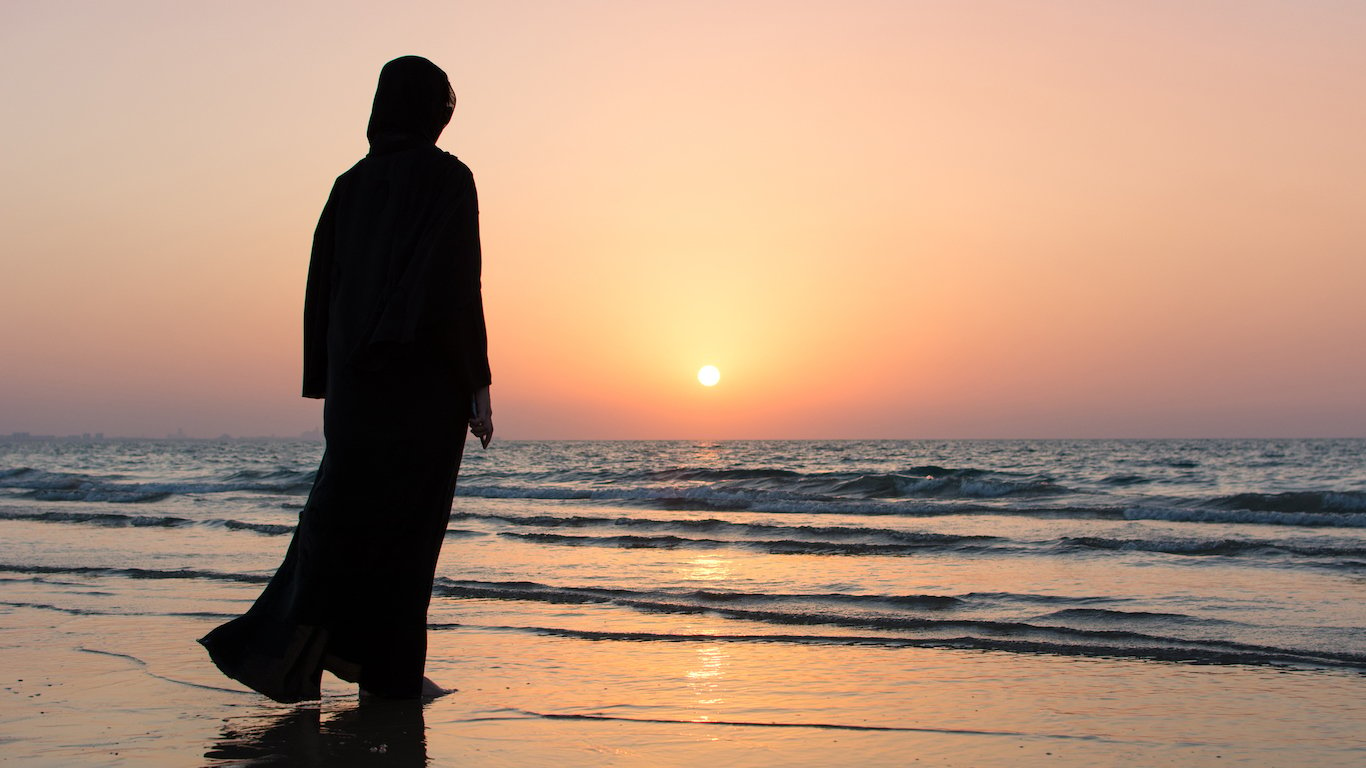 24/7 Wall St.
24/7 Wall St. 24/7 Wall St.
24/7 Wall St. 24/7 Wall St.
24/7 Wall St. 24/7 Wall St.
24/7 Wall St. 24/7 Wall St.
24/7 Wall St. 24/7 Wall St.
24/7 Wall St.
